Literature. Parallel universes of Belarusian literature
Cinema: “Swan Song” vs. “Black Castle”
Theatre: new financial rules and an actor-minister
Music: the pressure of the past and the “pleasure of confrontation”
Traditional culture: Belarusian bands win at the Polish festival, and straw spiders become a popular symbol
Art: Beads of natural beauty scattered across a dark swamp
Literature. Parallel universes of Belarusian literature
The political background of the cultural life of Belarusians at the beginning of 2025 was determined by two events. This is Alaksandr Łukašenka’s “re-election” for another term on January 26 and the beginning of Donald Trump’s presidential term in the United States on January 20.
Freedom Day overshadowed by inauguration
The first event was hoped to halt the repression. It did not come true. The pressure on civil society did not decrease, and physical and psychological attacks on civil activists in exile intensified. According to the Belarusian PEN, symbolic and physical cleansing of the cultural field continues. However, the discourse of Free Belarus was indirectly recognized by its opponents as something significant. This is evidenced by the demonstrative inauguration of Alaksandr Łukašenka on March 25, on the 107th anniversary of Freedom Day. Cultural officials reacted to this “restoration of stability” by returning to routine, which was embodied in voicing intentions to expand and implement the postulates of the state ideology “in the minds and hearts” of the nation.
As for the global agenda, the chaos and shock caused by the flurry of Donald Trump’s initiatives was exacerbated by the US’s abrupt withdrawal of international support for a free press and non-governmental organizations, including Belarusian ones. As a result, a number of independent media outlets that provide high-quality coverage of culture (for example, “Reform” and “Budzma!”) found themselves on the verge of survival, and the Belarusian bureau of Radio Liberty simply ceased operations for an indefinite period at the end of March. This is not only about the public platform that writers have lost, but also about the content of the Belarusian office of Radio Liberty itself as a fact of literature (written in “Taraškievica”, which is now a rarity), since hundreds of episodes of this American media outlet have turned into dozens of books in recent decades that have become an important part of the literary process. For example, the book “To Kill an Upalminzag” by a former Giedroyc Prize laureate Zmicier Bartosik from the “Liberty Library” series was also shortlisted in the last season, 2024.
Now we will try to show with specific examples how literary life developed against this background inside and outside Belarus.
Forward to 1917
On March 12-16, the main Belarusian page-turning attraction took place: the 32nd Minsk Book Fair.
It was quite difficult for a regular visitor to this state-owned amusement park to find 10 external differences between last year’s event, dedicated to the 80th anniversary of the liberation of Belarus, and this year’s – dedicated to the 80th anniversary of the victory: the same accents, the same book “new releases”, the same costumes and scenery. The main guest country of the fair was Kazakhstan, which became an occasion to once again present the Belarusian editions of the classic Abai Qunanbaiuly (translators – Mikoła Miatlicki and Kazimir Kamiejša) and say many pathetic words about the Kazakh-Belarusian friendship. In fact, there was a feeling that the pages, just in case, had been turned back at least half a century: the slogans that sounded from the stages were not even of the Perestroika period (the end of the 1980s), but of the late stagnation time (the beginning of that decade). It looked quite eccentric and even patriotic, because the main customer of such a design – the Russian literary establishment (represented at the Minsk Fair by the chairman of the Union of Writers of Russia Vladimir Medinsky, one of the key ideologists of the Russian Federation) – has moved much further in rewinding history and is actively recreating the narratives of the Russian Empire before 1917. Any narrative based on post-Soviet internationalism is, in this case, the lesser evil.
The book novelties of the exhibition had a wide stylistic amplitude. At one pole were the spectacular-looking and pathetic content of “biopics” commissioned by the Ministry of Information — “Metropolitan Filaret” (by Natalla Jakavienka, and published by “Mastackaja litaratura”, to the 90th anniversary of the cleric), and “Our President” (published by “Belarus”). The latter book, weighing as much as a silicate block, has only 207 pages — coloured, chalky, and of a “strong manager” style. Several flaps with a facsimile of A. Łukašenka’s handwriting are inserted into the book. The book, authored by Alaksandr Radźkoŭ, Natalla Ejsmant, Uładzimir Piarcoŭ and Aleś Karlukievič, is perhaps a hypertrophied preface to the collection of works of the famous publicist promised last year. It is possible, however, that the immortalization of the politician as a writer will be limited to this weighty tome.
At the other end of the spectrum of permitted literature, the official festival programme included autograph sessions with authors who had not previously been in the spotlight of the Ministry of Information. This is a fairly large cohort of Belarusian citizens who create genre literature for the Russian book market. Among the fans of the aforementioned book segment who visited Belexpo during the fair were, for example, Anna Askield (Abramkina) (Kasciukovičy) – an author in the style of “grimdark” – “dark fantasy”, a graduate of the Faculty of Journalism of Mahilioŭ University (2015), a recent correspondent for the newspaper ”Asipovicki kraj”; Janina Korbut, born in 1985, a graduate of the Minsk State Linguistic University, an author of cross-genre works, a finalist for the “Russian Detective” award in 2020; Julija Ijulskaja (Hrodna), a screenwriter in the gaming industry who creates kioko “high fantasy” and provides ghostwriting services; Aleh Savoščyk (Minsk), a graduate of the University of Law and Social Information Technologies (2015), a science fiction writer; Ułada Alchoŭskaja, an author of 25 books in the science fiction and detective genres; Barys Chantajeŭ, born in 1988 (Homieĺ), a horror author. All personal information is taken from open sources and was not highlighted by the organizers of the autograph sessions. Along with local genre writers, popular writers from Russia also appeared at the fair. A mass autograph session of Belarusian fantasy writers also took place: about 20 authors were announced. Published by various Russian publishing houses over the past 5-10 years, the aforementioned creators were invited to the fair by the stand of the OZ.BY bookstore.
It is difficult to understand what this sudden visibility is about. Perhaps it is about how much the role of marketing has increased in the Belarusian book market. However, let’s try to switch to a futurologist mode and predict the appearance of new stars in the firmament of authorized Belarusian writing.
Young faces, are you there?
The crisis with new names is one of the problems that clearly worries functionaries of official Belarusian literature. After all, as one person anonymously said in an interview with “Budzma!”, why are there officials from literature if literature itself does not exist? Let us allow ourselves a short digression: from 2021 to 2024, the Ministry of Information held 4 seasons of a literary competition with the progressive name LitUp, designed to find new authors for state publishing houses. In order not to copy-paste, let us refer to the Ministry’s release on the results of three years of the competition, which provides examples of published books. All this is mainly children’s literature. This year, as can be judged from scanty sources, the LitUp competition was not held.
In general, the media presence of the project is very episodic. We managed to find a list of finalists for only one competition year, but it is noticeable from it that something went wrong from the very beginning. Among the “new names”-2023 are, for example, the long-known (and beloved by many) Brest writer Zinaida Dudziuk, the chairman of the Minsk branch of the Union of Writers of Belarus Michaił Paźniakoŭ and… a publicist Andrej Mukavozčyk. At the same time, this year’s cohort of genre writers, filtered by the Russian book market and with a large, sometimes 20-volume experience behind them, are millennials and zoomers born in the 1980s and 1990s, not disconnected from the people. Many of them, in the eyes of the authorities, are not connected to the events of 2020 (unlike Russian-language authors Jaŭhienija Pasternak and Dzijana Bałyka, who found themselves in exile). This is excellent human capital for a state ideology, which in itself is a fantasy realm.
For those who doubt that “light” literature can be converted into “heavy” literature, we will remind you of the history of the state literary award “Golden Cupid”. Not “Golden Apollo” or even “Orpheus”. Cupid. Founded in 2006, in 2015 the cupid award evolved into the National Literary Award of Belarus.
It is not easy to determine whether genre writers have a great future in the homeland, but even today they are already contributing, albeit unwillingly, to the animation of the domestic book scene. The state needs young faces not only in space.
Between the poles of intra-Belarusian writing indicated above are novelties of varying degrees of freshness from ideologues: books about Donbass by Ludmiła Hładkaja, Ryhor Azaronak, etc., numerous versions of the “Genocide of the Belarusian People”. The collection of essays “Superposition. Parallel Worlds” (published by BelTA, 2024) analyzes the discourses of the Belarusian state of A. Łukašenka and the opposition as parallel universes. Against this background, the popular science saga by Ihar Marzaluk “From Russia and Lithuania to Belarus: the origins and genesis of the Belarusian people” (published by “Belarus”; it should be noted that the words “…and Lithuania…” in the title of the book have disappeared from the official programme of the fair). It is also worth noting the publication of the 86-year-old People’s Writer Mikałaj Čarhiniec with a 4-volume memoir “Hard Roads of Life” (a publishing house “Zvyazda”), where the history of the BSSR and Belarus is closely intertwined with the biography of the law enforcement officer and writer.
On the border
The Minsk Fair also highlighted the opportunity to buy interestingly designed new editions in the humanities (ethnography, linguistics, mythology) and very decent reprints of classics (Kupała, Kołas, Karatkievič, etc.). We won’t say where or how, but the Fair also sold the book-winner of the last Giedroyc Prize – “We Must Imagine Sisyphus Happy” by Valancin Akudovič (published by “Łohvinaŭ”).
We will place two more events in the transition zone.
- The presentation at the Russian book stand of the Belarusian book “(Un)clean Minsk” (“Dom knigi”, 2024) is something very cosy and souvenir-like, like socks with the image of draniki [potato pancakes] or a 3D-printed copy of the city’s main church — but here you go: we have literature as well. The book, authorized by the “Community of Belarusian Science Fiction and Fantasy “Writers’ Drawer” [“Шуфлядка писателей”], was published at the end of 2024 on Dziady and is a collection of mystical stories “with a Minsk location”. It is chthonic prose not just about mermaids, but about “mermaids in Svislač”.
- Chielena Pabiaržyna’s participation in the fair (Braslaŭ) – the author of 2 books of prose, the first of which – “Valsarb” (published by “Alpina”, 2023) – was included in the shortlist of the Russian award “Bolshaya Kniga”, making the author famous, and as a result even scandalous. Not declared (by chance?) in the official programme of the fair, but actively present at the venues, the writer said on social networks (Instagram @h_pobyarzhina) that on March 14 at the literary events she was attacked by a resident of Braslaŭ, who (as witnesses said – into a megaphone) announced to those present that “there was no Holocaust in Braslaŭ”, and the book of his compatriot denigrates his hometown. The novel “Valsarb” is written in the spirit of magical realism: a girl living in the 1980s is haunted by the shadows of Jewish children forgotten during the war. Pabiaržyna complains that she receives a lot of hate in her communicators, and also notes that, despite her success in Russia, no meetings with her were held in her native Braslaŭ.
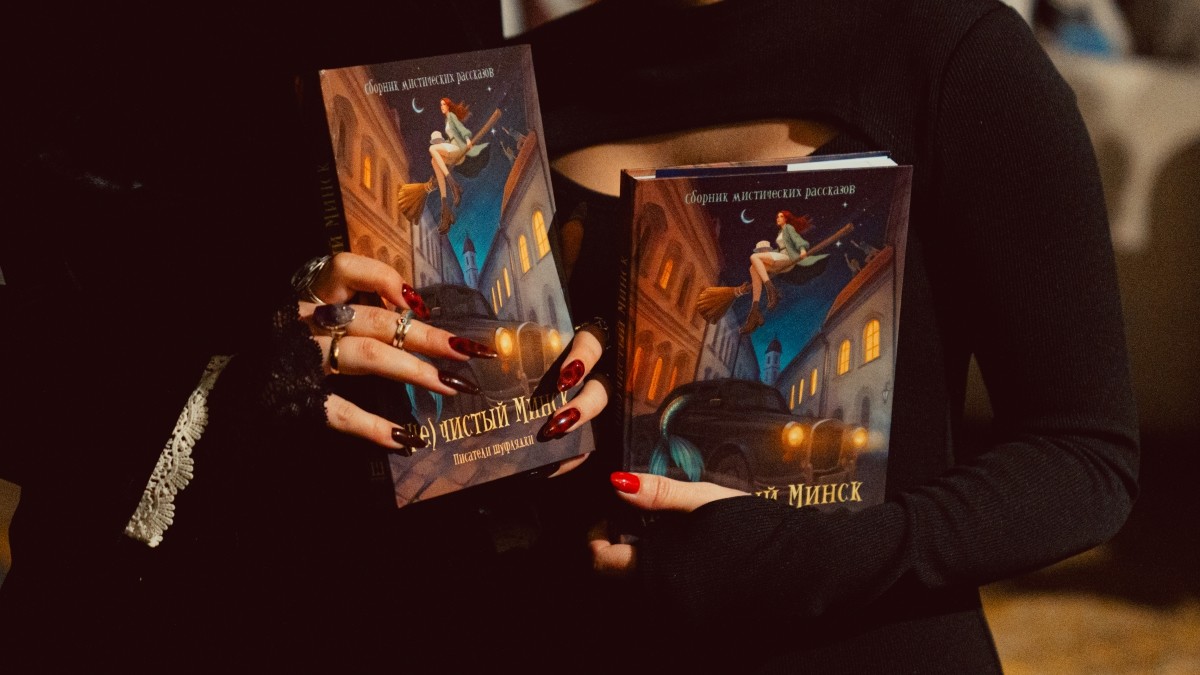
The examples given above highlight new interesting aspects of the development of the domestic literary process. Experienced domestic genre writers, such as the Belarusian-speaking Ludmiła Rubleŭskaja or Valer Hapiejeŭ, have disappeared from the public space – former top authors of both state and non-state publishing houses and at the same time finalists of the Giedroyc Prize hated by the authorities; meanwhile, Hapiejeŭ has been a finalist quite recently. In parallel, a new literary frontier is being formed with its own pitfalls and curiosities.
Thus, the Minsk Fair today is a symbiosis of ideology and animation. The space of normality shrinks every year like shagreen leather, and the share of propaganda expands.
Čarhiniec and Ščur. What unites them?
At the same time, outside of Belarus there is its own book atmosphere. It is hard not to agree with the propagandists of BelTA: today, the literary field “inside” and “outside” has formed into two parallel universes.
It is noteworthy that these universes experience common challenges, but the answers to them are formulated in alternative agendas. There are urgent searches for new names in both of them, as well as the understanding of the new state of reality (after August 2020, February 2022, and finally, January 2025). Everywhere there is a palpable hunger for new, interesting children’s books. Writers outside the country have the opportunity for public, not underground, performances, and free access to creative residencies in almost every EU country. This is the result of the fact that at the beginning of 2025, all independent Belarusian organizations that relocated from Belarus resumed routine work for the community (competitions, master classes, education of young writers), in addition, new book initiatives are developing their activities.
Outside Belarus, there are currently many more opportunities for free creativity, although they are overshadowed by political issues and the emigration status of authors. It is noteworthy that the opportunities that have developed in the free world can also be used by those authors who remain in Belarus – in some cases they are even given priority. This is especially true for distance learning or collaborative online projects that do not require crossing borders.
The written books can already be sent to a dozen Belarusian publishing houses in Europe and America. The most recent of them is called “SayBeat” and was created, it seems, for the book in the “hilarious memes” format “An Attempt at Experimental Construction of the Self” [“Спроба эксперыментальнага канструявання сябе”] by Maks Ščur. This project is worth mentioning because it mystically parallels the memoir project by Čarhiniec. Ščur published about a thousand pages of a phantasmagoric autobiography, which begins long before his birth and refracts the 20th century for us, in fact, through the prism of the author’s extraordinary personality.
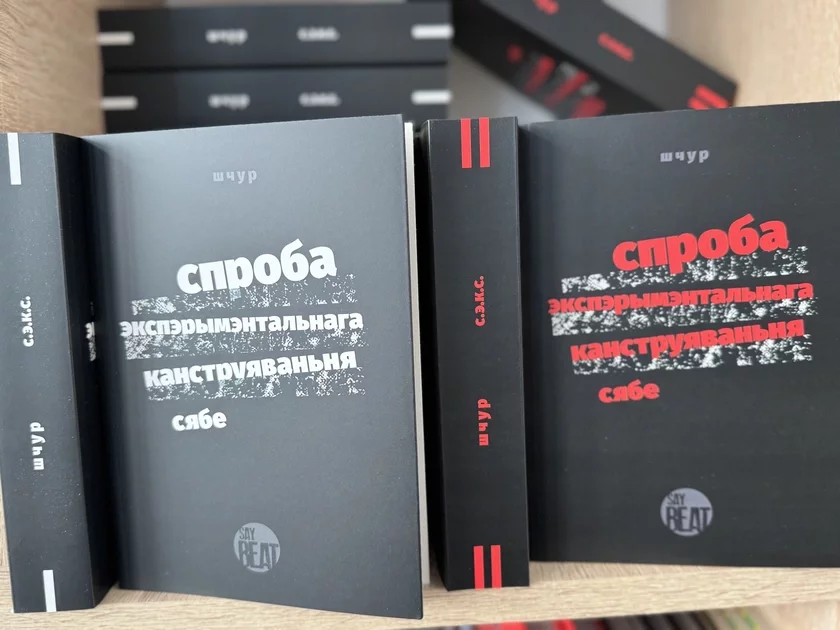
New names and new pen names
“Outside” Belarus, in addition to new names, pen names appear. “Long live the conspiracy!” is the slogan of Belarusian literature in the 21st century. The winner of the annual “Šufladka competition” [“Шуфлядка”] is Klok Štučny, author of the detective story “Murder on Makajonka Street” (published by “Januškievič”), the book reviewer of “Naša Niva” Zosia Łuhavaja, who almost weekly writes “popular” reviews of new books (good in all ways, except for “spoilers”), Hanna Fakju is a provocative creature of the outrageous book initiative “Łysy čerap” [“Bald Skull”] with the obscene language poem “Mužyki”. There are even more anonymous people, so why go far. 😉 It is noticeable that thanks to the created opportunities, the very position of the Belarusian writer becomes attractive, and this attracts creative people with different backgrounds to the community. For example, Alaksandr Karnaŭch, a physicist by education who relocated to Italy, made his debut at Gutenberg Publisher with the mystical detective story ”Cold lands”.
The “Januškievič” publishing house, which reveals sales ratings for its publications, announced in early April its sales leader — the young author Makar Vałynkin with the novel “The Last Generation”. The cover simply says — MAKAR. The graduate of the School of Young Writers, as evidenced by the reviews, did not create anything outstanding, but undoubtedly met the reader’s expectations: here they are, our talented youth, and they are making sense of themselves after 2020. As a result of the community’s many years of work with young authors, the first poetry books by Illa Kulbicki “Chronicle of the Denial of Emptiness” [“Хроніка адмаўлення пустаты”] (published by “Skaryna Press”) and “Urban Order” [“Замова ўрбаністычная”] by Viktoryja Tryfanava (published by “Januškievič”) were released.
Parallelism is our everything
We should remind you that reviewing books and even listing all new books is not the purpose of this article due to its modest scope, and we hope that the new award season will set the accents. Almost all the usual literary awards have announced the start of applications collecting, including the Belarusian PEN Aleś Adamovič and Francišak Bahuševič awards – for the best journalistic and historical works, respectively. It is noteworthy that this year it was possible to nominate not only texts, but also author’s statements in the multimedia format. In 2025, the literary competition “Exlibris” will be held, founded in 2012 by the Independent Union of Writers. It was dedicated to the 90th anniversary of Anatol Kłyška, removing the previous age limit for participants, but instead asking them to send finished manuscripts of children’s books, and not, as before, their first literary attempts. It turns out that an opportunity has been created here, parallel to the domestic LitUP competition.
An interesting parallel opportunity for Russian-language writers who disagree with the Belarusian regime is created by the publishing house “Mianie niama” [“I Am Not Here”], whose director Pavieł Ancipaŭ published a “lyrical post-fiction” about the 2010s in Belarus “To Come Somewhere, Do Something, and Leave” [“Куда-нибудь приезжать что-нибудь делать и уезжать”]. Another book by this publishing house in a similar genre — by Taćciana Zamiroŭskaja — “Evridika, Check, Have You Turned off the Gas” [“Эвридика, проверь, выключила ли ты газ”] — about the author’s worldview in emigration — would not have seen the light of day if it weren’t for the offer from “Mianie niama”. The books from this initiative are published alongside new Belarusian-language releases or reprints of notable books from the 2000s (for example, the announced collection of short prose by Uładzimir Sciapan “The Wolf” [“Воўча”]. The author remains in Belarus.
And finally, the pinnacle of Belarusian parallelism. A domestic book fair also took place outside Belarus. It was the Leipzig Book Fair, the winners of which (Leipziger Buchpreis) were: Alhierd Bacharevič for the German version of the epic “The Dogs of Europe” with the wording “for a contribution to European understanding” (published by Voland & Quist, translated by Thomas Weiler) and T. Weiler himself as the translator of the book for the German version of the book “I am from the Fiery Village…” [“Я з вогненнай вёскі…”] by Aleś Adamovič, Janka Bryl, and Uładzimir Kaleśnik.
The Leipzig Prize introduces the honoured writer to the ranks of the most important authors in Europe and paves the way for the Nobel Prize in Literature. For example, Sviatłana Aleksijevič received it in 1998. As for the triumph of the book “Feuerdörfer” (published by “Aufbau”), which is positioned as the testimonies of the surviving victims of the Wehrmacht’s crimes during the occupation of Belarus, in the context of German repentance for Hitler’s crimes, it draws a strange parallel with the thesis of internal Belarusian propaganda about the “genocide of the Belarusian people”. In fact, the positioning of the Belarusian nation as victims, which after 2020 replaced the approach “we heroically defeated Nazism as part of the Soviet people” is a very strange choice of ideologists. It is not entirely clear how this was allowed to happen at all. It is unpleasant for an ordinary person of any nation to associate with victims – everyone wants to have strong ancestors, so the new thesis undermines the authority of the Belarusian regime.
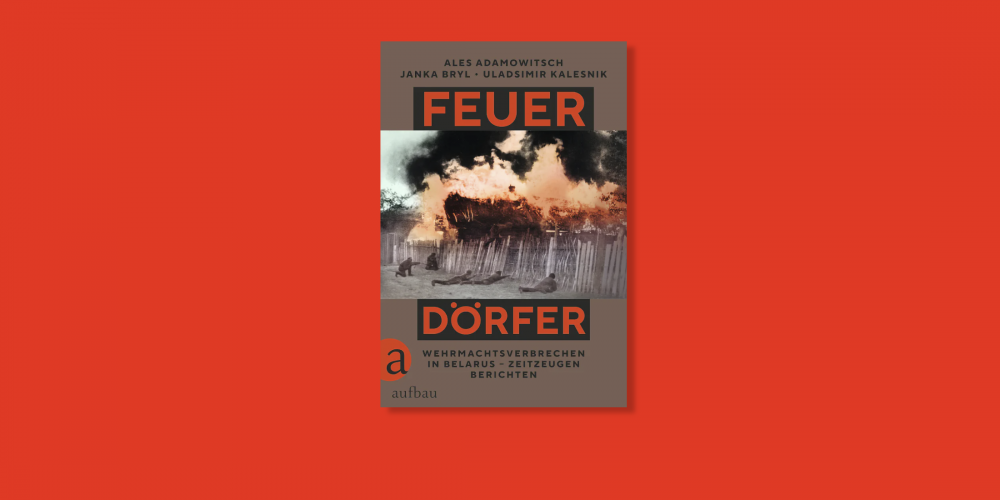
Books as a hot commodity
The events of early 2025 allow us to identify the main trend of 2025 both inside and outside Belarus. This is paper trading.
Belarusians’ book appetites are growing, nationally oriented texts are a hot commodity, because it seems that people are ready to sweep off the shelves any pulp product that has passed through the binder and contains words with “ў”. This has had a pleasant side effect. While writers have few intellectual and moral resources to comprehend reality or create parallel universes, translators are leading the way. Publishing houses “Januškievič”, Gutenberg Publisher, “Łohvinaŭ”, “Pflaŭmbaŭm”, “Papury” – and, in fact, all the strong players – ensure the appearance of both current world bestsellers and sought-after classics in Belarusian. Let us note here the masterful translation feat of Lavon Barščeŭski, who continues to publish important ancient epics. From the latter – “Aeneid” by Virgil (published by “Cymbieraŭ”). The second significant example is “The Books of Jacob” [“Księgi Jakubowe”] by the Nobel laureate Olga Tokarczuk translated by Maryna Šoda (published by “Pflaŭmbaŭm”). Another manifestation of the trend is decent reprints of iconic books from the 1990s that are little known to the general reader. A typical example is “Adam Kłakocki and his shadows” (published in 2000) by Ihar Babkoŭ with a new author’s editing, careful proofreading and in hardcover (published by “Łohvinaŭ”). According to open announcements and closed information, old books in a new way are the main book publishing vector of 2025.
Useful sources
Finally, let us repeat the list of the main resources that help the author of these lines to follow the Belarusian literary process in its entirety.
This is bellit.info — the digest of the independent union of writers.
The website of the Belarusian PEN, where there is a lot of news about repressions in the cultural sphere and announcements about creative opportunities for writers.
The news feed “Budźma!”, from which you can conveniently access podcasts. For example, “Vusy Skaryny” [“Skaryna’s Mustache”] by Cimoch Akudovič, “Smaleńnie viepruka” [“Roasting a Boar”] by Nasta Suchanosik, etc.
This is the “Cultural Front” section of the “Reform” website, where such a well-known genre as a book presentation report has not died out. In addition, reviews of new books are posted here every month. This portal was especially noted by Alhierd Bacharevič, who entrusted it with the publication of the text of his speech for the Leipzig Prize.
It is worth subscribing to the PDF version of “Літаратурная Беларусі” [“Literary Belarus”], the concept of which has not changed since the days when it was still a monthly supplement to “Novy čas”. In our chaotic times, such conservatism seems more like an advantage.
The value of the listed resources is that they do not divide cultural figures into those who left or those who stayed, objectively presenting the events of parallel literary processes. We call on other literary initiatives and individual authors to directly send announcements of their projects to the mentioned media outlets in order to support them with content in a difficult time for the media and to make access to literary news for the general reader even more convenient.
Cinema: “Swan Song” vs. “Black Castle”
The main event of the beginning of 2025 for Belarusian cinema was the participation of Juryj Siamaška’s film “The Swan Song of Fedor Ozerov” in the Berlin International Film Festival. Belarusians have previously been in the Berlinale programme with a feature film, but out of competition. Juryj Siamaška’s film was selected and shown with great success among the festival audience as part of the “Forum” – one of the main competition programmes.
Does the screening at one of the main class “A” film festivals mean that the long-awaited breakthrough of our cinema has occurred and Belarusians have finally entered the elite of world cinema?
From DIY to “Berlinale”
A film by Juryj Siamaška, which at first glance seems modest, is a full-fledged European co-production created between Vilnius, where the creator himself lives, Warsaw, where the filming took place, and Germany, where the sound post-production took place.
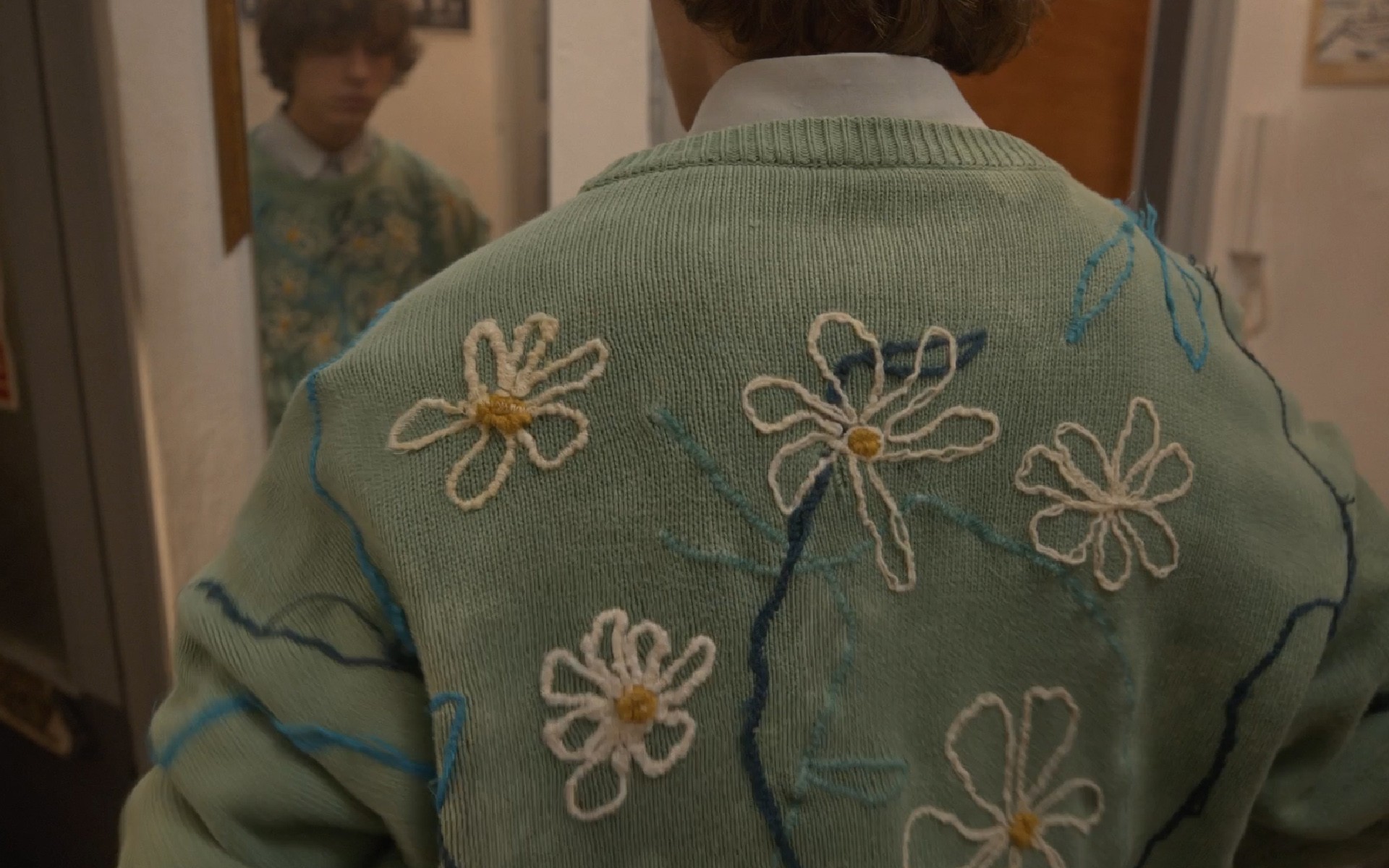
The films of the author, who was forced to emigrate from Belarus, allow us to attribute him to the direction of DIY (Do It Yourself) – home-made cinematography. Since the mid-2010s, Juryj Siamaška has created more than a dozen short films, completely independently and autonomously from the film industry. Their witty and inventive animation in various techniques was combined with live shooting on a digital camera. Juryj Siamaška’s low-budget films were distinguished by their unique authorial style. But the creator managed to overcome the psychological professional barrier only with “The Swan Song of Fedor Ozerov”.
This film became the first great success of the entire Belarusian film industry in emigration. It was possible to realize it precisely through integration with international European institutions and film companies. At the moment, this is actually the only way to create a professional film for Belarusian migrants.
The idea of a full-length project by Juryj Siamaška was among the two winners of the first micro-budget film incubator and the script laboratory of the Belarusian Filmmakers Network in October 2023 – January 2024. These initiatives are organized (two editions have occurred so far) with the help of several European institutions and offer the winners a grant for further film development. The project then managed to find the main partner – the Lithuanian company ARTBOX Production House and a producer Keistutis Drazdauskas. At the final stage, the German company Tonbuero joined, which was involved in the final sound editing of the film. Hence Lithuania and Germany as producing countries in the credits. Belarusians – participants in the project – the organizer of the micro-budget film incubator Belarusian Filmmakers Network Leanid Kalicienia and a director Uładzimir Kazłoŭ, while supervising Juryj Siamaška’s film from the very beginning, are considered only the co-producers of the film.
But the national identity of “The Swan Song of Fedor Ozerov” should not raise any questions. The film’s recognizable characters speak Belarusian and Russian in almost equal proportions, and the action takes place in a post-Soviet city that is very similar to Belarus.
However, the film is well understood not only by Belarusians, and this is its advantage and the reason why it was included in the programme of the emphatically international Berlinale. Juryj Siamaška, like another Belarusian DIY filmmaker, Mikita Łaŭrecki, is a creator of extremely private stories. The main character of the film, Fedor Ozerov, played by a non-professional actor, a musician Viačasłaŭ Kmit, is a half-comic figure, with a large share of infantilism at his core, half-tragic, a confused figure, typical not only of the Belarusian 2010s. “The Swan Song of Fedor Ozerov” is a story which is simultaneously absurdist and on the verge of a mystery – it’s an involuntary momentary slice of shaky and uncertain times. However, it is precisely the extreme authorship and sincerity that distinguish “The Swan Song of Fedor Ozerov”.
A little over a year passed between Juryj Siamaška’s first application and the premiere at the Berlinale. A small budget and actors unknown to the general public did not prevent the film from being selected for the “A” class film festival competition. In the last few years, the Berlinale has been moving towards greater artistry and originality of author’s works, and the modest at first glance “The Swan Song of Fedor Ozerov” came exactly to the right place.
The micro-budget nature of the project also had its advantages – most of the work on his hyper-authorial film was performed by Juryj Siamaška himself, and therefore he personally controlled it, as he was not guided by the requests and conditions of large companies. The film does not fall under the canons of either industrial commercial cinema or the so-called art mainstream. It does not have a clearly defined political or social message, nor is it tied to any specific events. Juryj Siamaška’s authorial approach, absurd and parallel to standard cinematic practices, looks like a clear advantage here against the background of loud cinematic manifestos and acutely topical on-screen statements.
“The Swan Song of Fedor Ozerov” is as if in a parallel reality, but paradoxically falls under the requests of the festival audience. The latter could be seen at the “Berlinale”, where all screenings were sold out. “The Swan Song of Fedor Ozerov” did not receive the main awards from the jury of the “Forum” programme, but a very important honorary award was the audience prize, which is noteworthy, from the jury of the newspaper “Tagesspiegel”.
At the same time, the distribution fate of “The Swan Song of Fedor Ozerov” remains uncertain. The participation of the already finished film in the European Film Market, which took place on February 13-19, 2025 as part of the “Berlinale”, was just what was supposed to find partners for future screenings. While Juryj Siamaška’s film is looking for a way out to a wide global audience, its producers are engaged in festival screenings. Thus, the film has been invited to the competition programme of the Jeonju International Film Festival in South Korea. The festival specializes in auteur and experimental cinema and will be held from April 30 to May 5, 2025.
Pitching, premieres and projects
Along with the already finished film by Juryj Siamaška, promising Belarusian projects in various stages of development also participated in the European Film Market. On February 16, under the auspices of the Belarusian Independent Film Academy, a pitching of 10 full-length film projects took place, one of which is a documentary, the rest are fiction. A sign of the times – the teams of three of the projects remain anonymous.
Last year’s high-profile premiere, the political drama “Under the Grey Sky” by a Belarusian director Mara Tamkovič, was released in Polish theatres on March 28. Prior to that, the film had limited screenings at film festivals and diaspora screenings in several European countries.
The first teaser of the new project of the author of the series “Processes” Andrej Kašpierski “Judgement of the Dead” has been released. The film directed by Andrej Kašpierski tells the story of a Belarusian judge who begins to be haunted by the dead people she sentenced. The shooting of the short film took place last fall in Warsaw. But, according to the idea of authors Andrej Kašpierski and Michaś Zuj, the short film will precede the full-length film with the same title and plot and will help find funds for the realization of the latter. The main role in the film is played by an actress Zoja Biełachvościk.
The online cinema of Belarusian cinematohraphy VODBLISK, associated with the team of the festival “Northern Lights”, has launched a new project DOC:DOC. Here you can watch documentary films in a reporter format dedicated to current issues of various kinds.
The Belarusian theme was supported at the international level by the Italian service of the multi-European TV channel ARTE. The 13-minute film “Voices from Belarus. Animated Testimonials. Part 1” (“Voci dalla Bielorussia | Testimonianze animate #1”) was created in the direction of animadocs, which has become relevant in recent years (the stories of the heroines are visualized using animation). Four heroines, residents of Belarus, talk about their experience of confrontation with the political regime and the state. The stories of the anonymous heroines, voiced by professional actresses in the Belarusian language, are a very emotional, and at certain moments terrifying viewing experience that cannot leave anyone indifferent.
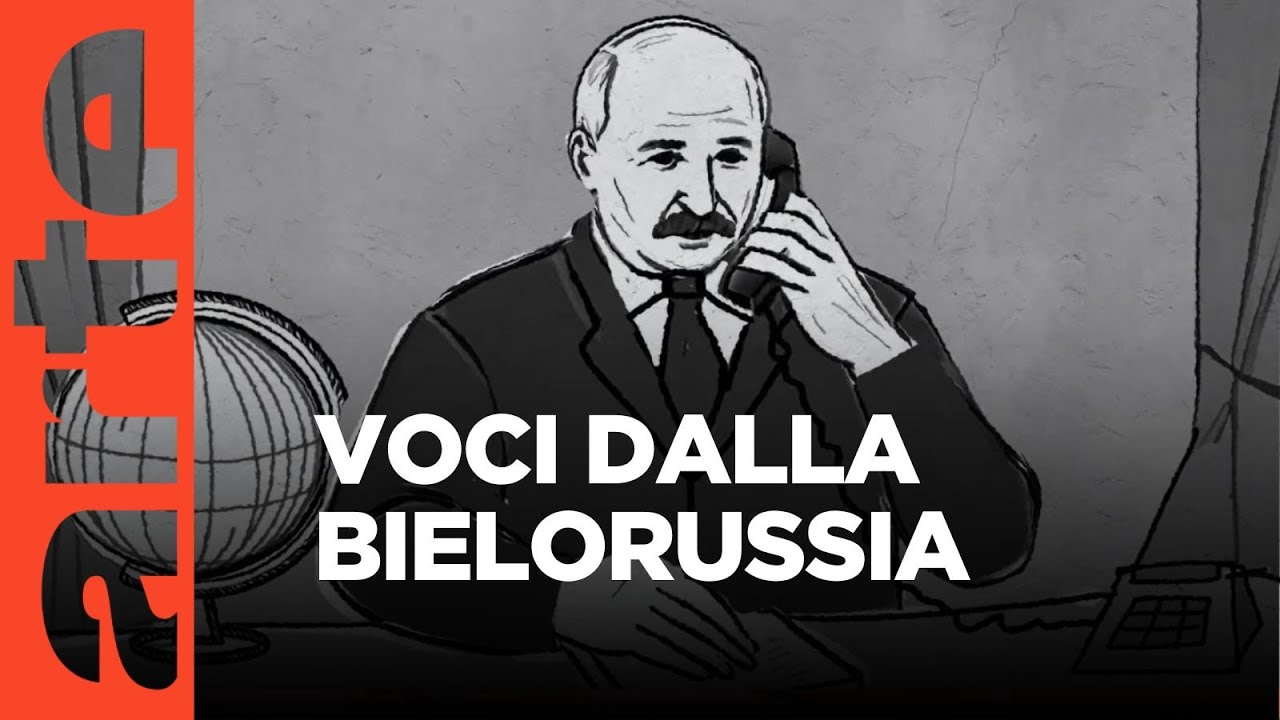
What is going on in Belarus?
Here, at the beginning of April 2025, the film “Black Castle” and the animation “Białowieża Forest” are still on at the cinemas. These are the projects developed by private producers, which from the very beginning aroused a certain curiosity of the Belarusian public, although the wide distribution of films is ensured, including through organized screenings for schoolchildren, students, etc.
“Black Castle” is a joint production of several private Russian and Belarusian film companies with the formal participation of the “National Film Studio “Belarusfilm”. The Russian-language screen adaptation of Uładzimir Karatkievič’s historical bestseller was made by the project’s producer Hleb Špryhaŭ, and directed by a Russian director Kirill Kuzin, known for a number of minor projects.
The film was financed by the ministries of culture of both countries, but the main actors in it were Russians: both as performers of the main roles and as members of the film crew. The heavily modified and simplified version of the plot of the postmodernist work by Uładzimir Karatkievič is clearly adapted for a viewer unfamiliar with the literary source and Belarusian history. Instead of a potential national hit “Black Castle”, the viewer received an adventure film with a plot as light as possible. The spectacular level of the film also leaves you disappointed. The creators are clearly counting on a serial version of the picture, since the cinema film version has not yet made an impression or become popular among the Belarusian and Russian public.
The animated film “Białowieża Forest”, on the other hand, was in the news for several days after its premiere on January 30 due to the innovative approach to production. The creators claim that this is the world’s first full-length animation made in just a few months exclusively with the help of artificial intelligence. Previously unknown in the professional circle of artistic animation, Arteki Studio from Minsk made “Białowieża Forest” based on Hollywood 3D cartoons. This applies to both the plot and the visuals. In the conditions of a small Belarusian film distribution, it is difficult to talk about the financial success of the film. The artistic secondary nature and technical imperfection of “Białowieża Forest” compared to foreign works should be noted.

Both “Black Castle” and “Białowieża Forest” were created in Russian by private producers and are rare commercial projects from Belarus in the domestic cinema, clearly not aimed at a nationally oriented audience.
Meanwhile, after the events of 2020, the commercial component of film production still comes second in the eyes of the current political regime in Belarus. State-run feature, documentary, and animated films are primarily aimed at propaganda. This is evidenced by the latest premieres and films currently being released at “Belarusfilm”.
In January-March, the premieres of documentaries directed by Uładzimir Łucki “The Monastery of Saint Jefrasińnia” and “The Phoenix Bird of Alaksiej Tałaj”, as well as the animation project “State Symbols of the Republic of Belarus. Calendar of Holidays” by Kanstancin Andrušačkin, Iryna Tarasava, Taćciana Nahorskaja, Alena Turava and Natalla Kaściučenka, took place. The filming period of Ivan Paŭłaŭ’s film “One for Two” and Kirył Chalecki’s “Class teacher” began.
The creators of the films stick very closely to the theme and direction of the state order within which they are entrusted with filming. The artistic and commercial potential of the projects is obviously the least of the clients and authors’ concerns.
Against the background of the forced departure of many active and promising filmmakers, the state film production concentrated on “Belarusfilm” is in an obvious crisis – it lacks talented personnel. At the same time, on March 3, Alaksandr Łukašenka emphasized to the new head of the Belarusian Ministry of Culture, a film and theatre actor Rusłan Čarniecki, that he “is not going to forgive” specialists in creative professions. Against this background, on March 27, Dźmitryj Siamionaŭ, who previously worked in administrative and official positions, was appointed as the new director of the National Film Studio “Belarusfilm”.
As for independent auteur cinema, at the beginning of 2025 it was represented in Belarus by amateur short films. And the few screenings are held in a closed or semi-closed format “for friends” and are not advertised.
Thus
- The main event of early 2025 is the first premiere of a feature-length film by a Belarusian author Juryj Siamaška in the Berlinale competition programme.
- The formula for the success of Belarusian cinema abroad is a clear authorial beginning, non-conformism plus close international cooperation and financial support.
- Auteur cinema in Belarus itself has almost completely disappeared into partisanship at the moment.
- The political regime in Belarus still sees state-funded cinema primarily as a means of propaganda.
- The main premiere of early 2025 “Black Castle” based on the novel by Uładzimir Karatkievič is a set of pseudo-Hollywood cliches typical of new entertainment cinema in Russia.
Theatre: new financial rules and an actor-minister
Erasing and rewriting history, the influence of Russia and attention to military themes in the repertoire, russification and staff shortage. These characteristics have long become everyday and typical for Belarusian theatrical life. But many other events have taken place in this segment of culture. Our new review is about them.
Theatres make money themselves. How?
2025 began with changes in the rules of the game (announced in advance, however). From January 1, the domestic theatre switched to a new financing system: 50% of the budget is now allocated by the state, 50% is earned by the teams themselves.
Meanwhile, the theatre collectives only recently, from the beginning of 2024, began to get used to the proportion of 60% to 40% (most of which was state-funded). The independently obtained part of the financing even then seemed too high. In the pre-revolutionary years of 2017–2019, the share of off-budget funds in large republican theatres reached 34%. In regional ones – up to 37%. But such indicators were more often achieved through additional measures: paid events, a large number of entertainment products. All these forced steps towards obtaining money prevented the development of the teams and the actors themselves.
Three months have passed, and the theatres continue to work. But at what cost? For example, the director of the Youth Variety Theatre Siarhiej Miadźviedzieŭ shared a secret: “We have opened creative studios, where we provide services in vocal training, choreography and theatrical skills. An important area of work is the organization of events. Our competencies allow us to organize a concert of any level — from a small corporate party to large-scale republican events.” The Opera Theatre went even further. “We began to actively offer performances by our honoured artists through trade unions, for example, in sanatoriums, dispensaries, and cultural centres. We are forming creative teams within the theatre, which, when travelling, will also earn money,” said the director Kaciaryna Dułava. Theatres are engaged in anything they want, in addition to their main activity. And this clearly hinders creativity and negatively affects the quality of performances.
We don’t expect any changes
In December last year, the Gorky Theatre actor Rusłan Čarniecki became the Minister of Culture. Apparently, he understands that not everything is perfect in domestic theatres. Otherwise, Čarniecki himself would not be earning money with his near-government public activities and filming in films. But in four months of work, he did not initiate any changes in the activities of theatres. On the contrary, the new minister was clearly told what is possible and what is not. When approving the new government, Alaksandr Łukašenka forbade Čarniecki from hiring public representatives of the cultural sphere who opposed the government in 2020. This indicates that such attempts may have been made. For the near future, they have definitely been put to rest.
The boundaries of what is and what is not permitted were clearly defined in an interview by the artistic director of the Gorky Theatre, Siarhiej Kavalčyk. He criticized the nineties, when supposedly “questionable themes and plays were often taken up, the repertoire did not always please” (in reality, it was a time of alternative, a return to previously banned texts and authors). Kavalčyk praised the state for “preserving traditional repertory theatre, which upholds moral values. <…>. It is precisely traditional theatre in our Slavic understanding, which comes from Stanislavsky.”
In reality, repertory theatre is preserved not only in Belarus. But its conservation in our case really took place. Kavalčyk’s model, which fully corresponds to state policy, allows only a turn to psychological theatre, which is given the opportunity to develop in the Procrustean bed of state collectives. The existence of private theatres or the development of alternative directions is not envisaged.
We note that both the Gorky theatre head, and his father, the main director of the Musical Theatre Michaił Kavalčyk, and the latter’s wife Emilija Kavalčyk are the teachers of dozens of actors and directors who have passed through the capital’s Academy of Arts. The conservatism of the teachers cannot but affect the students. To what extent, it will become clear in the future.
Problems in education and adaptation to new realities
However, all members of the Kavalčyks family got their education during the Soviet era, when it more or less corresponded to the times and maintained a certain level. In our time, the bar of requirements is increasingly lowered. The Department of Actor and Director’s Skills at the Minsk Academy (the very combination of specialties is already absurd) is now headed by a theatre critic Volha Stalarova, who has not played on stage as an actress and has not staged performances on a professional stage. And she has not yet defended her dissertation – in Soviet times, doctors of science were usually appointed the heads of the departments, during the years of independence – at least PhDs were appointed. We observe the systemic crisis in which domestic theatre education is.
Meanwhile, the new generation is forced to adapt to new realities. For example, Lizavieta Maškovič, who as a student practised theatrical readings based on modern plays, is now working on the Soviet plot. First, she staged the nostalgic play “White Dews” in the capital’s New Drama Theatre based on the far from modern and, unfortunately, not very relevant play of the same name by Alaksiej Dudaraŭ. Later, she prepared a stage reading “Film Scene: An Office Romance” for the Backstage festival based on the cult Soviet film of the same name. Arciom Pinčuk, who in the past played in a licensed Broadway musical, now directs the Theatre of the Belarusian Army. The latter, however, does not negate the hope that he will be able to change something there. But the example of Maškovič – the full-time director of the New Drama Theatre – allows us to be skeptical about this.
Otherwise, the situation in the domestic theatre has not changed globally. “Educational conversations” are held with actors (for example, with the RTBD troupe). There is a personnel shortage: the heads of the collectives cannot be found for 10 months (this is how long they were looking for the Music Director). The Lugansk Theatre, which works in the territories occupied by Russia, is touring the country. The Mahilioŭ [email protected] festival has again become a platform for showing Russian performances: this year there are 14 of them on the theatrical billboard (plus nine Belarusian and one Azerbaijani). By the way, if in the 2010s the youth jury was made up of locals, now it has been formed from Russian theatre students.
However, the premiere of “Mroiva” (directed by Jaŭhien Karniah) at the Puppet Theatre (December 2024) is selling out – as are all the productions of this collective, which in the absence of competition reached the peak of its popularity and even faced resale of tickets. Readings of plays are taking place in the RTBD, which was bloodless from repressions (during the period under review, we are talking about “Capital Around” [“Сталіца Эраўнд” – in Belarusian] and “Stories of a Strange World” [“Гісторыі дзіўнага свету” – in Belarusian]. The same collective premiered the play “My Homeland” based on the play by the domestic playwright Maksim Daśko. And in the first half of April, the world premiere of the ballet “Kupalle” by the Belarusian composer Lizaveta Loban, staged by Siarhiej Mikel, took place at the Musical Theater.
Competition abroad and entry into the Korean market
The domestic theatre abroad continues to face the eternal difficulties of emigration troupes: a limited audience, lack of permanent funding, etc. For example, “Free Kupalaucy” took a break until the end of March 2025 after performances in December 2024. It was then that “Theatre Week” was held in Warsaw, during which they staged productions of “Moj Hleb”, “Geese-People-Swans” (twice), “Extremists” and “Zekameron”. It is significant that this time they managed to organize online broadcasts on YouTube – which is a rarity recently.
The most significant achievement of theirs seems to be “Geese-People-Swans” – an original interpretation of “The Dogs of Europe”, the novel by Alhierd Bacharevič. The rest are more of an educational nature.
Perhaps the “Kupalaucy” will be helped in their activities by the award received from the Ministry of Culture of Poland. However, the team has already announced that thanks to the support of Belarusians and Polish cultural institutions, 15 performances will be staged this year.
For now, as Aleh Harbuz said in an interview, the pause in performances is explained by the fear that “our audience will get tired too quickly if we play often. We cannot play to half-empty halls, because we live entirely on ticket sales, we have zero funding, simply none.” According to Harbuz, the rate is 500 złoty ($125) per performance, sometimes it is higher. Naturally, with a small number of performances, it is not possible to live solely on those earnings.
However, even in such difficult and unfavourable conditions for development, the theatre is trying not only to survive, but also to develop.
Premieres are being staged. For example, in February 2025, a warm, heartfelt performance “Cieśla” [“Цесля” – in Belarusian] (directed by Andrus Darała) was staged in Lithuania, in which the former actor of the New Drama Theatre, Siarhiej Toŭścikaŭ, is a leading actor. The production is dedicated to Belarusian families divided by the border and current political realities. It is also the resumption of the work of the “August Theatre”, which has taken a break in recent years.
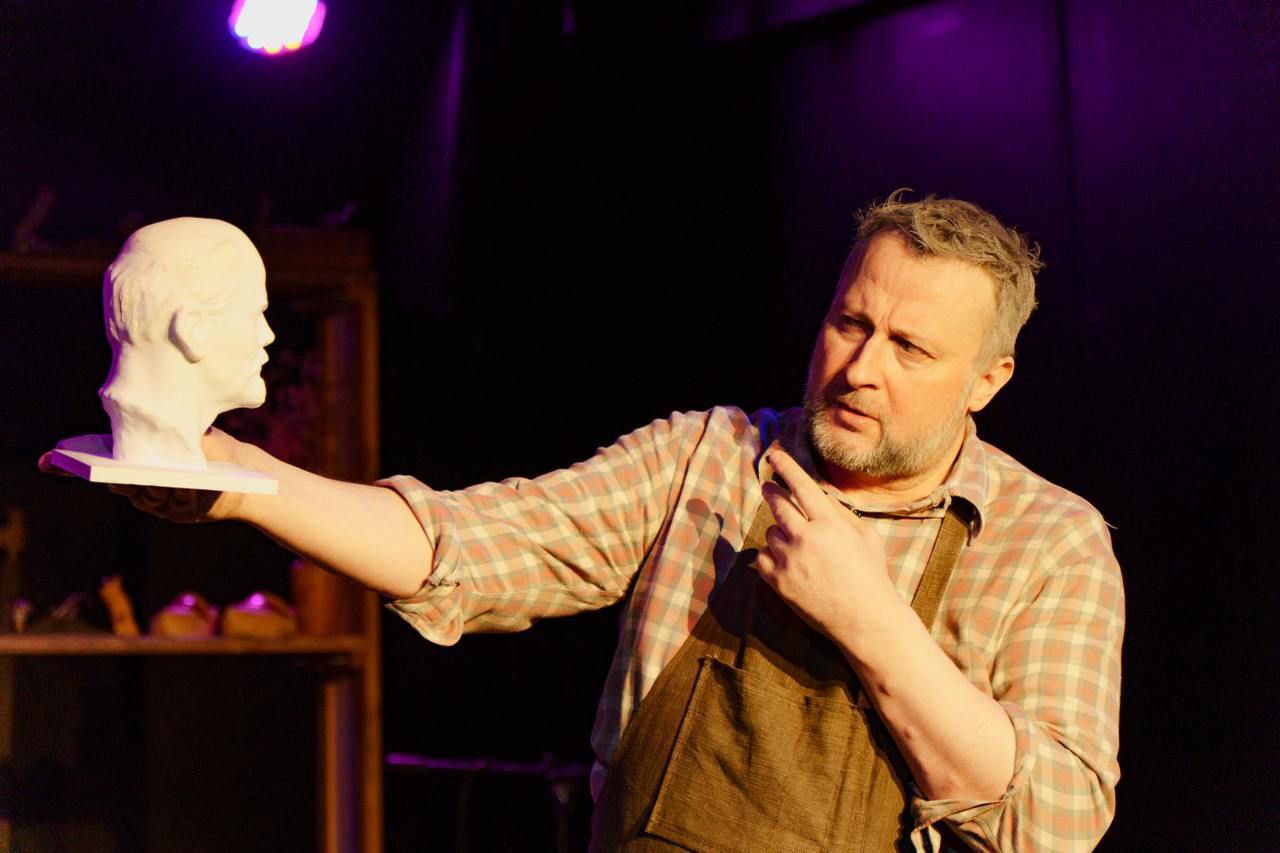
There are reruns of already staged performances – and this is significant, because their life – as often happens – does not end at the premiere stage. For example, in January in Warsaw you could see “Radio Prudok” [“Радзіва Прудок” – in Belarusian] – perhaps the only activity of “Kupalaucy” this year before the “Theatre Week”. In March in Warsaw – the play “What are you going for, wolf?” [«Па што ідзеш, воўча?» – in Belarusian] was staged, etc.
It is important that tours are taking place, breaking the isolation inherent in emigration. In February, Warsaw and Białystok showed the play “My Mom is in Prison”, which premiered last year in Lithuania (children take to the stage together with professional actors). In the same month, London showed “KS6: Small Forward”, in which a basketball player Kaciaryna Snycina talks about her experience (the first screenings took place last year in the USA). In March, the production, which is more like a bright show (partly in the format of a TEDx talk) with the aim of drawing attention to Belarus, could be seen via an online broadcast on YouTube.

The achievements of the emigrant theatre are recorded. For instance, this happens on the pages of the Draft almanac, which is published by the EHU. The source is dedicated precisely to theatre in exile and emigration. Obviously, the next issue will also celebrate the work of Mikita Ilinčyk, who staged the play “Pygmalion” on the stage of the Teatr Polski w Poznaniu od 1875, the action of which is transferred to the future and tells about the deportation of migrants from EU countries.
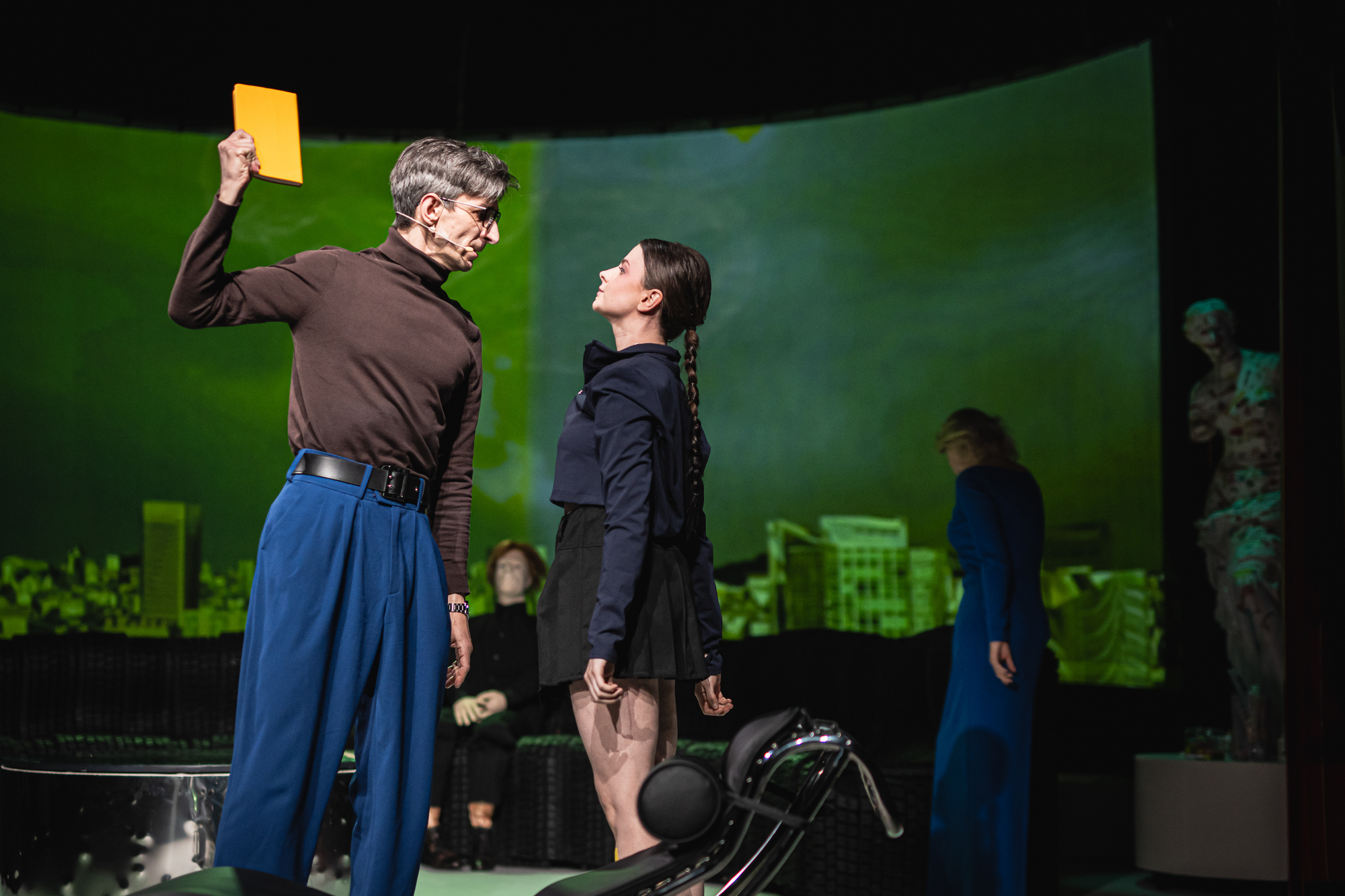
In addition, theatre institutions work in the field of education. For example, the by.teatr initiative has recruited two training groups. This is significant, since the issue of training new actors/actresses in the future will become one of the key problems for the emigrant theatre. New actors and actresses are almost non-existent. The only exception is the forced emigration of theatre people precisely in the Western European direction (because often, seeing problems and difficulties with working in their specialty, they strive to stay in their homeland or choose Russia). Therefore, this problem will inevitably have to be solved in the future.
However, not everything is pessimistic. For example, a theatre critic Nastaśsia Pankratava organized a working meeting of representatives of Belarusian puppeteers with the leadership of UNIMA at the level of the president of this organization (we are talking about the International Union of Puppet Theatre Workers, an affiliated structure of UNESCO). As a result, despite the liquidation of the Belarusian section, our compatriots will be able to directly join UNIMA and have support in their projects. And Palina Dabravolskaja’s solo performance “SarmaTY/YA” was shown at a festival in Seoul, Korea. This shows that domestic theatre can and should be in demand in the world.
Music: the pressure of the past and the “pleasure of confrontation”
The most fruitful field of activity is cooperation with foreigners. Official Belarus strives for the past, and the new Belarus is trying to find itself in the big world. The country’s musical space is traditionally filled with Russian artists and pop music, and the island of Belarus is underground. Belarusian music abroad continues to gather compatriots at concerts and festivals, and emigrant venues lose to local ones.
Integration vs assimilation
The most active collaborations at that time were with foreigners. There are very few initiatives from Belarusians for Belarusians now, and the geography of life motivates us to explore nearby territories.
Palina wrote the music for the Couture Spring 2025 show at Paris Haute Couture Week. This is not her first foray into the fashion world: last year, her music was used for their collection by the French-Moroccan clothing brand Casablanca.
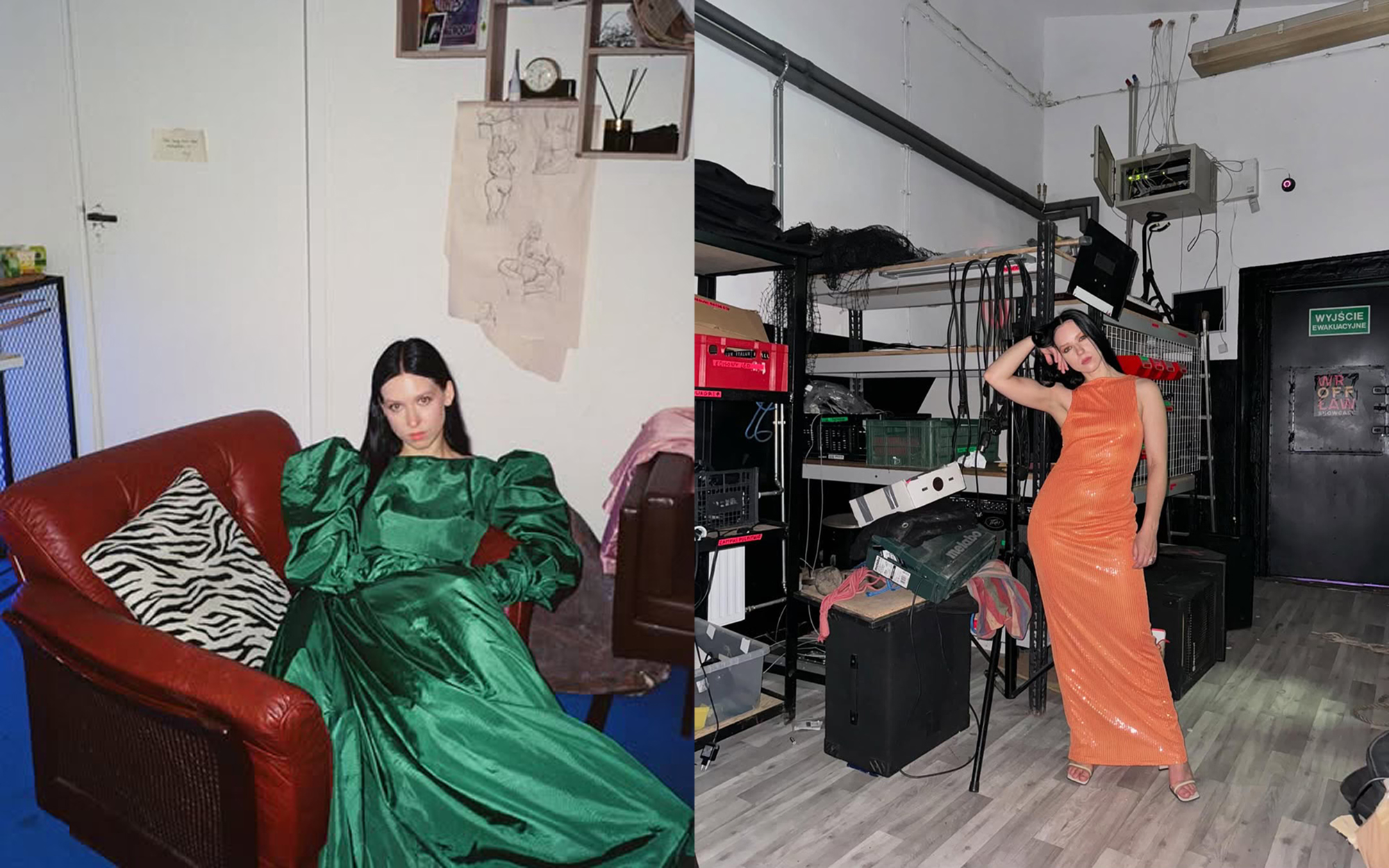
Naviband in the new album “Адліга” [“Thaw”] recorded fits with Palina, “Bi-2” and the Georgian band Mgzavrebi. Svieta Bień appeared on the album of the Tatar project Tatar Kyz:lar. A symphonic metal band Belle Morte presented the album “Pearl Hunting”, which features 23 ethnic instruments, and 18 musicians from 12 countries took part in the recording.
A Czech artist Iva Marešová and the band Razam, featuring a Belarusian musician Alaksandr Jasinski, presented the album “Na dně mojí duše”. It was recorded with the Hradec Králové Philharmonic Symphony Orchestra. The album is also notable for the fact that it features, among other things, the songs based on the texts by Belarusian poets Uładzimir Karatkievič, Valaryna Kustava and Aleś Płotka.
Viktar Siamaška has been working in the field of collaboration projects for many years. This year, as part of the Fantastic Swimmers project, he presented the release of “Svintus Grandiosus” – an international album-production in the spirit of political satire for the avant-garde cabaret. In addition, the author shared a preview of the album, which he is working on with Volha Hapiejeva. It will feature the poet’s German-language poems. 20 people have already joined the project, including the musicians from Belarus, Poland and the USA, and the release is planned closer to 2027.
There are also attempts to attract foreign listeners: sometimes Belarusian musicians use the languages of the countries they live in in their songs. The band Vapna presented the Belarusian-Lithuanian single “1000 Krain / Nusivylimas”, the band “Biaz nazwy” recorded a song in Polish, and Vola Šnip even created a separate Polish-language project “Nocne Ptaki”.
Pan Savyan released his debut Polish-language album. The artist started with ironic songs in Russian, but gained real popularity after participating in the Polish Eurovision selection with the song “W kolorku amaretto”. Now the guy sings exclusively in Polish, has concert tours and thousands of listenings (and even millions of listenings for some songs).
Somewhere there is a fine line between integration and assimilation. Pan Savyan got from the Polish audience what the Belarusian industry could not give him (because it simply does not exist). This is one example of talent that Belarusian culture could have, but Polish culture will. Such examples may continue to appear. After all, almost always the enrichment of Belarusian culture is charity.
“Eurovision” vs “Intervision”
The Podlachian duo Sw@da i Niczos reached the final of the Polish Eurovision Song Contest. They took second place among 11 artists in the selection, gaining 23.69% of the votes. The musicians combine traditional Podlachian singing and rapping, and this caused controversy on social networks, as not all Poles were happy with this prospect. Some listeners admired the diversity of the Polish nation, while others accused the musicians of using a “made-up” language and pandering to the Ukrainian minority. Belarusians supported the duo as their own, since the Podlachian language resembles Belarusian. However, “official” Belarus also somehow included the duo in the list of compatriots – the Ministry of Information of Belarus included the Sw@da Instagram page in the list of “extremist” materials.
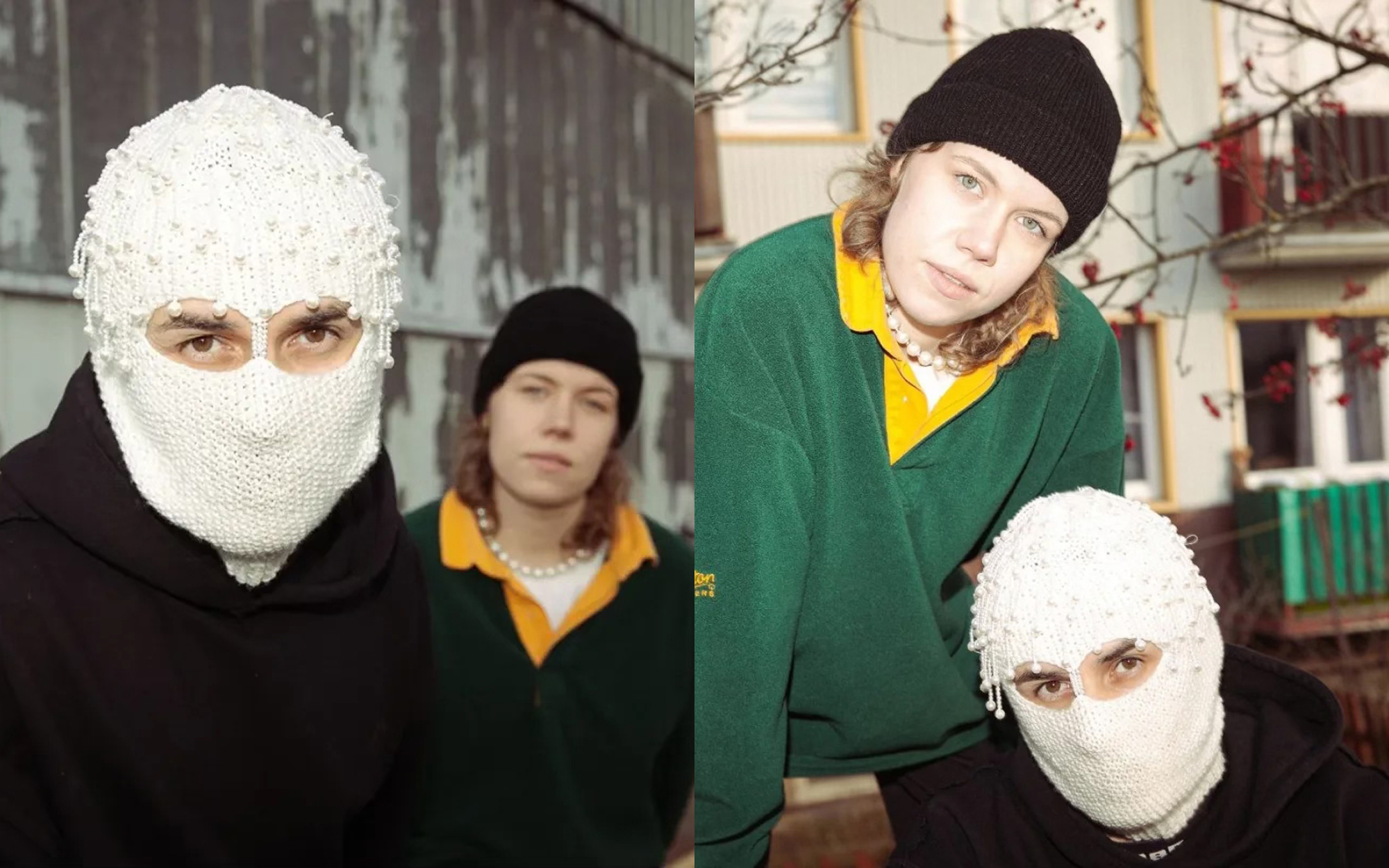
Belarus did not qualify for Eurovision again, the country was disqualified back in 2021. Then the state Belarusian Television tried to send the band “Hałasy ZMiesta” [“Галасы ЗМеста”] to the contest, but the organizers discovered a political subtext in the song and disqualified the band. As a result, “Belteleradiocompany” was expelled from the European Broadcasting Union.
Instead, Belarus plans to take part in “Intervision” [“Интервидение”], a contest whose revival was initiated by Russia. It was created in the 1960s and ceased to exist with the collapse of the USSR. Its reincarnation is now being promoted as a local alternative to “Eurovision”, but mainly the BRICS countries and their partners plan to take part in it. “Intervision” is due to take place in Moscow in September 2025. “Belteleradiocompany” has organised a national selection and was due to close on 31 March, but there is still no information on how the Belarusian representative will be chosen.
The state’s desire to go back has long been steadily visible. There are retro discos and romance evenings, “victory marches” of the past war during the current war and the celebration of the October Revolution Day. It seems logical that Łukašenka’s state in its modern form is something that should remain in the past.
State billboard vs underground
The situation with the music scene in Belarus is completely identical to the previous reviews. Most of the bill is occupied by Russian artists: Stas Mikhailov’s performances (two in a row) are interspersed with the band “Руки Вверх!” [“Hands Up!” in English]. The merger with the Russian context is often traced in even more characteristic events. For example, the Ministry of Culture reported that “a festive concert dedicated to the Constitution Day of the Republic of Belarus was held in Moscow”. In addition, the “Song of the Year of Belarus” will soon be held – an event that state media calls “the main musical event of the year”. At the “Marathon of Unity” music was the decoration of the pre-election days. Here everything was illuminated by performances of amateur groups, and the peak was the new “March of the Commander-in-Chief” by the band Aura.
In parallel and in contrast to this, many underground concerts are held for several dozen or hundreds of people. Tour certificates for them are issued just as chaotically and at the last minute, but even in such conditions, decent line-ups of Belarusian artists are assembled.
The festival season this time may be more interesting. Stereo Weekend has been announced for July — a festival that was held in Minsk for the first time in 2018, and was postponed in 2020 due to Covid restrictions and a lull. One would also like to hope for the resumption of “business” and the musical component of “Вуліца Ежа” [ “Food Street” in English]. The rest is predictable so far: Viva Braslav, belbet fest, Festiwow, and Pružany “Солнцестояние” festival [“Solstice” in English] is gradually announcing their traditional Russian line-up.
A number of Belarusian festivals have also been announced abroad. The Podlachian festival “Tutaka” and the Dutch “Kupalle on the North Sea” will be held for the 5th time, and the Kraków “Letucien” will be held for the 6th time. Concerts by Belarusian musicians are also not slowing down, although they still take place mainly in Poland. The BOSS parties organized by the Belarus Outside Sound System community stood out in particular this quarter. The concerts were held simultaneously in four cities – Warsaw, Poznań, Kraków, and Gdańsk, and gathered about 3 thousand people in total.
Closings vs Openings
The Belarusian music club Scena Chmielna closed in Warsaw. It existed for 1.5 years. At the beginning, many Belarusian concerts took place there. But over time, the organizers found a number of Polish clubs with better conditions, and concerts at the venue changed. Unable to manage to raise funds (they planned to collect 80 thousand złotys through donations), the club announced its closure due to rent arrears.
At the same time, a number of Belarusian musicians are attracted to the new Białystok Music Club. But it seems that Warsaw’s story may repeat itself. The venue organizes exclusively Belarusian events and gathers a couple of dozen people for them. Already now, in some cases, Belarusian musicians, coming to Białystok, choose to play in a neighbouring Polish bike pub, because they have their own audience and can guarantee the presence of an external listener. In 2025, we again have an attempt to build the Minsk-style “Graffiti” club, but time edits itself.
Something new has now appeared in the media field. The “Klik” channel launched a website with novelties of Belarusian music. The platform is automated and updated when new releases appear. You can also see up-to-date statistics about listening to Belarusian artists on streaming services there. For now, this is a test version, but it is already functional.
Opportunities for Belarusians vs. opportunities for everyone
It’s another quarter, when there were no special opportunities for Belarusian musicians. The world offers opportunities for growth, and some Belarusians manage to take advantage of them. “Molchat doma” is once again gathering full houses on their American tour. This year, the Rap&Vogue band performed at Eurosonic, the main showcase festival in Europe. But at Tallinn Music Week, which hosted the Belarusian delegation for several years, there was again no one from our Belarusian artists. In the spring, musicians were called upon to apply for the new Music Week Poland showcase, and in a few weeks it will be known whether any Belarusians will be in the lineup. Attempts to fight for visibility on the global stage have not yet been very successful. Reality forces us to grow, which we do not want, and we are forced to start the race not from the start, but from a negative position.
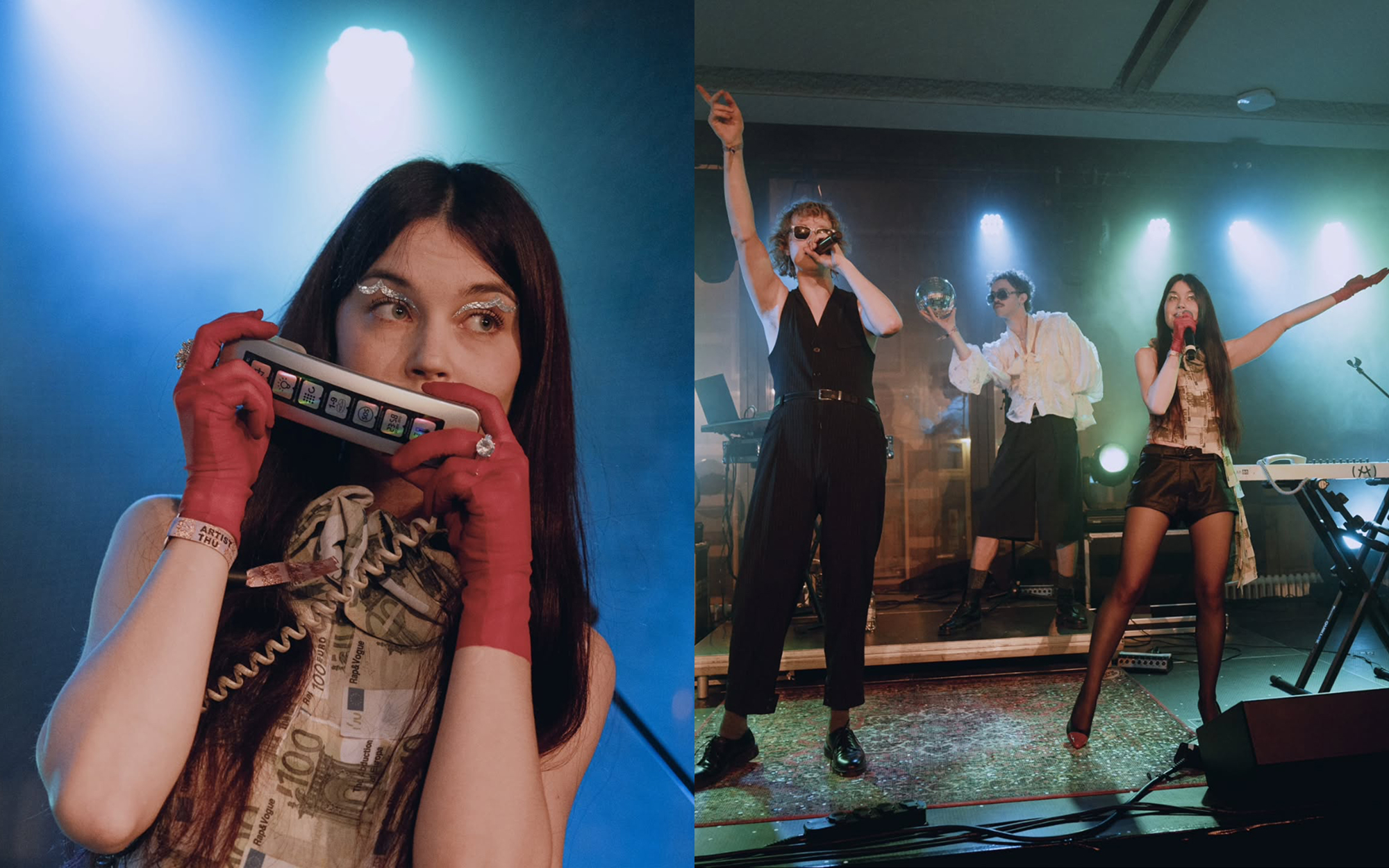
The most pleasant result of the beginning of the year is the successful cases of cooperation between Belarusians and foreign artists. Attempts to gain the attention of the local audience sometimes lead to the loss of Belarusian identity. Official Belarus again failed to qualify for “Eurovision”, but is planning to qualify for “Intervision”. Alternative concerts are held in the country, but the pressure of Russianness and state-owned pop music prevails. Summer festivals are announced abroad, and in place of some closed clubs, newly opened ones are the same. Belarusian artists are forced to play according to the rules common to the whole world. Here, a few succeed, and hundreds attract fragments of attention.
Traditional culture: Belarusian bands win at the Polish festival, and straw spiders become a popular symbol
In another review of events in traditional culture, we will analyze holidays, dances, songs, crafts, and the most significant publications. The opportunities for public celebrations in Belarus are narrowing, while Belarusians abroad, on the contrary, are celebrating more and more traditional holidays. Dance parties still have the widest geographical reach compared to other aspects of traditional culture. Belarusian groups “Kasary” and “Kapela Tryhradzka” became laureates of the prestigious “Stara Tradycja” competition. Making straw spiders is becoming increasingly popular.
Traditional culture remains a significant factor influencing the lives of Belarusians both inside and outside the country. Moreover, this factor is important for both the pro-government and protest-minded parts of Belarusian society and has the potential for unification, as noted, for example, by an anthropologist Sciapan Zacharkievič in his article “Traditional Culture of Belarusians: A Successful Project of the Cultural Heritage of Belarus, Instrumentalized by Ethnography”.
Holidays
Since the beginning of the year, Belarusians have celebrated Christmas/Kalady, Candlemas/Hramnicy (February 2 according to the Julian calendar and February 15 according to the Gregorian calendar), Maślenica/Zapusty (another name for the period before Lent, which is more common in the western part of the Belarusian ethnic territory). There was also one public event dedicated to Kamajedzica. At the end of March, several city events celebrating the Call of Spring/Hukańnie viasny were held. As for the significance of holidays in rural culture and their transformation in urban life, we refer to our last year’s review for January-March. In this year’s review, we will focus on open events dedicated to these holidays, outside the circles of family and friends.
Christmas/Kalady
Most of the Christmas/Kalady parties dedicated to the Catholic holiday took place at the end of 2024. At the beginning of 2025, Belarusians in Warsaw and Vilnius organized Christmas events. A series of Christmas concerts with a musician Siaržuk Doŭhušaŭ were held for Belarusians in the USA in different states. In addition, we know about the performances of the Christmas nativity scene (Batlejka) in Vilnius, Lithuania and Lublin, Poland. Traditional rituals and songs were used by the Warsaw theatre studio “Kupalinka” in its play “Vika, the Godmother and Christmas Miracles” based on the book “Christmas with the Godmother” [“Каляды з Хроснай”] by Alena Masła.
On Candlemas/Hramnicy, we know about public celebrations in Batumi and Vilnius. This is a good trend compared to last year, when the holiday was not presented in public space.

Maślenica/Zapusty was celebrated in Batumi and also in Warsaw. As for Belarus, in state cultural institutions Maślenica/Zapusty remains one of the most popular holidays. In the Belarusian State Museum of Folk Architecture and Life, it was celebrated twice: on March 1 and 2. The second holiday was called “Forgiveness Sunday” [“Даравальная нядзеля”].
Perhaps the most famous celebration of the Call of Spring/Hukańnie viasny took place in Viazynka near Minsk this year, without the participation of NGOs. The Janka Kupała Museum, which has been the organizer of the event for many years, was allowed by the authorities to invite only groups operating under official cultural institutions. Therefore, NGOs that usually came to Vyazynka organized another celebration in another place near Minsk. The Call of Spring/Hukańnie viasny also took place in Vietka with the support of the museum, at the Belarusian State Museum of Folk Architecture and Life near Minsk. Among Belarusians abroad, we only know about an open event for the Call of Spring/Hukańnie viasny in Batumi.
The Belarusian State Museum of Folk Architecture and Life celebrated Kamajedzica on March 29. This is the only public event we know of dedicated to this holiday. It is not widely known and widespread. There is only one ethnographic description of this holiday, made in the Biahomĺ parish and published in 1874. Kamajedzica is dedicated to a bear, which, according to a popular belief, awakens from hibernation on the eve of the Annunciation.
Dancing
Traditional dance classes and parties are still held regularly or occasionally in at least three major cities in Belarus (Minsk, Mahilioŭ and Polack). Dancing is also held in five cities in Poland (Warsaw, Gdańsk, Poznan, Wrocław and Kraków), but meetings in Białystok are suspended for now. In Warsaw, two out of three teachers of Belarusian traditional dances have stopped regular classes since the beginning of the academic year. Belarusian dance meetings are held in Vilnius and Batumi, although historical dances and dances of other nations are also taught in the classes. The Batumi dance group celebrated a one year anniversary since the start of regular meetings in February. The dance group in Poznan also celebrates a one year anniversary in April. Thus, we can note a tendency towards a slight expansion of the Belarusian dance movement abroad, although some initiatives are stopping their activities (possibly temporarily).

The second trend can be noted in Poland: the integration of Belarusian dance movements with Polish ones. Poles are increasingly coming to Belarusian parties and master classes in different cities. In the series of workshops on Polish traditional dances at the Embassy of Traditional Music in Warsaw, aimed primarily at Poles, Belarusian master classes continue to take place every few months. Kapela Tryhradzka from Gdańsk, which plays dance music, became the laureate of one of the most prestigious Polish folklore competitions, Stara Tradycja. It will perform at a concert during the Wszystkie Mazurki Świata festival in Warsaw on April 23. After the concert, a vote will be held for the audience award. The festival also plans to host a master class on Belarusian dances by the Krakow-based Po Drodze ensemble, which plays both Belarusian and Polish music. As far as we know, Lithuanians and Georgians do not show as much interest in the dances of the Belarusian diaspora as Poles.
A school of bagpipers continues to operate in Warsaw, teaching mainly dance music. In January, the school launched its own YouTube channel, Dudy By, with educational videos. It publishes performances by experienced bagpipers during classes on the techniques and practice of playing the bagpipe, rules for using the instrument, and music theory.
Singing
We know of singing classes and groups in at least three major cities in Belarus (Minsk, Mahilioŭ and Polack), four in Poland (Warsaw, Białystok, Gdańsk, and Wrocław), as well as in Vilnius and Tbilisi. Representatives of the “Singing Gathering” [“Спеўны сход”] initiative in Batumi sometimes teach traditional songs.
The male traditional singing group Kasary from Warsaw, as well as Kapela Tryhradzka from Gdańsk, became this year’s laureate of the Stara Tradycja competition. They will also be eligible to vote at a concert during the Wszystkie Mazurki Świata festival in Warsaw on April 23 (the audience prize will be awarded). In January, Kasary released their own version of the Christmas song “Da na Dunaječku”/“Да на Дунаечку” from the village of Morač, Klieck district.
In February, there was an attempt to revive the “Singing Gathering” [“Спеўны сход”] initiative, popular in Belarus in the 2010s, by holding it in Warsaw. The meeting was dedicated to songs recorded by Ryhor Baradulin. However, it is probably too early to talk about the permanent resumption of the gatherings.
Crafts
Traditional embroidery, harlačkas (women’s neck decoration), and needlework classes continue to be popular in Belarus and abroad. We know of regular embroidery classes only in Minsk. Traditional embroidery techniques are often used in art projects.
At the beginning of the year, the exhibition “Traditional costume” [“Строй”] with reconstructions by Ekaterina Vodanosova continued at the Free Belarus Museum in Warsaw. The latter was exhibited in Poland for the third time. Before that, it was shown at the Museum of Agriculture in Ciechanowice and at the Centre for Belarusian Culture in Białystok. Some episodes of Kaciaryna Vadanosava’s programme “Nitka Zorka” on Belsat are dedicated to the theme of traditional costumes. For example, a video about the svitka (Belarusian men’s and women’s outerwear made of cloth) was recently released.

The Brest Art Museum holds exhibitions in the “Brest Ethnographic Region” [“Брэстчына этнаграфічная”] series. At the beginning of the year, the “Kobryn and Žabinka Regions” exhibition continued, and not so long ago, the “Luniniec and Stolin Regions” exposition opened. Both exhibitions were promoted by the images of women in traditional costumes on posters.

Minsk museums regularly hold lectures on costumes from different regions. At the beginning of the year, the Museum of Ancient Belarusian Culture of the National Academy of Sciences of Belarus continued to hold an exhibition of weaving, embroidery and costumes of the Western Bryansk region “Connecting the Shores”.
The Museum of Belarusian Malavanka [malavanka – Belarusian painted carpet] in Zaslaŭĺ continues to popularize the art of Malavanka: in February, a master class on painting on bags was held.
Numerous workshops on making straw spiders were held during the Christmas season. It is difficult to say whether the inclusion of Belarusian straw weaving in 2022 on the UNESCO list of the Intangible Cultural Heritage of Humanity has influenced the popularity of this craft in recent years. Perhaps the fact that making a spider is relatively simple and quick played a role, which allows people, who have not previously been involved in traditional crafts and do not have developed manual skills, to join Belarusian culture. It is also possible that it is a relatively easy way for those in emigration to feel their Belarusian roots. Straw spider motifs are often used by jewellery makers.
Most significant publications
“The Water-Queen, Helper to the Whole World. Belarusian Riddles with a Retelling into Russian and a Translation into English” [“Вадзіца-царыца, усяму свету памачніца. Беларускія замовы з пераказам на рускую і перакладам на англійскую мову”] from the series “Folklore Treasures of Belarus” (the publishing house “Biełaruskaja navuka”). The same series has already published the books “Where Truth and Injustice Come From: Belarusian Folk Legends and Tales” [“Адкуль праўда і крыўда: беларускія народныя легенды і былічкі”], “A Good Proverb Like a Tie to a Bag: Belarusian Folk Proverbs with Russian and English Equivalents” [“Добрая прыказка як да мяшка прывязка: беларускія народныя прыказкі з рускімі і англійскімі адпаведнікамі”]. All editions are decorated with images of vycinanki [a Slavic version of the art form of papercutting]. The books were prepared based on materials from folklore expeditions by the employees of the Centre for Research on Belarusian Culture, Language and Literature of the National Academy of Sciences of Belarus.
“Belarusian Folk Songbook” [“Беларускі народны спеўнік”] (55 calendar and ritual songs with notes) is a book by the publishing house “Biełaruskaja navuka”. The book includes songs collected throughout the territory of Belarus in the 20th century.
Thus, it is difficult to say that the analyzed period was rich in bright, memorable events. However, traditional culture and its modern manifestations remain an essential part of Belarusian culture.
Art: Beads of natural beauty scattered across a dark swamp
The absurdity and cynicism of the rapid political changes have gained such a pace that even the most relaxed art cannot keep up with the turbulent media news and the speed of the destruction of old systems. Europe suddenly found itself in the middle of both military and economic fires, which cannot but affect Belarusian art activity. It seems that we have finally returned to the positions and principles of 1989. Conservatives, in anticipation of the “apocalypse”, strive for the revival of morality. The Left Front draws attention to the ecological catastrophe and the self-destruction of the human and the natural.
Theatricality above all
This season in Belarusian art seemed a bit slow, as if under the influence of the intractability of major socio-political problems, such as the continuation of the war in Ukraine and the Palestinian-Israeli military conflict, the beginning of the US trade war, the reduction of funding for cultural projects, Belarusian pseudo-elections that abolished the right to vote for people abroad, etc. There were perhaps fewer events, but there were enough of them, both bright and status-related.
Theatricality in the visual arts and working in the theatre against the backdrop of reality performances is becoming an obvious trend. And it seems that this is no longer so much a performance in itself, but rather part of a larger game outside the art scene, which is changing the lifestyle and image of the artist.
At the Beijing Biennale, modernity, through art connected to science and technology, seeks to touch the unknown. It is somewhere between matter and time, as if creating a new alchemical laboratory, at the centre of which are people themselves.
Staging, cabaret and masquerade as everyday camouflage in Anastasija Rydleŭskaja’s work further advance her as an artist in a broad sense, to the stage where she is increasingly established as a singer and where the boundaries she seeks to cross are erased. Here, visual beads fall from the sunny bright mask, and the true dark but open reality of total freedom appears through words and sound.
A completely different kind of staging for the Havana Biennial could be the example of Valeryj Kacuba’s photographic project “Realismo Romántico. Cuba”, where the architecture of classicism, like the people in it, is more similar to idealistic sculptures from the colonial era. The similarity with the stories of the times of slavery, when prisoners were used as sculptures, does not leave a disturbing sense of dissonance between the beauty of ancient forms and the complete absence of genuine non-romanticized realism of Cuba.
Taša Kacuba and Alaksandr Adamaŭ use the fashion platform, where their art mimics a design attraction. The showcase is not so much for sale as for display, where the people themselves are objects in a glass box. And if Kacuba’s clothes and accessories overcome her own experience of drama and crisis, representing the cruel world of the beloved dominant black, then in Adamaŭ‘s case, although the same theme of survival sounds, the bulletproof vest for the “old child” resembles a surrealist game of meanings and a new technological process that overcomes youthful infantilism.
The same questions about the connection between fashion and art, mass culture, the fashion industry, and the concept of the norm were raised at the exhibition in Minsk “Fashion. Between Beauty and Coercion”. We understand that a number of provocative topics cannot be addressed in today’s Belarusian space, but this deficit is well localized by forms of representation, which allows curators to continue speaking in the modern language of art.
Even more interesting is the appearance of artists in the theatrical production “Pygmalion” directed by Mikita Ilinčyk. The scenography was done by Raman Traciuk, who used his and Andrej Anro’s works. Based on the classic text, the Belarusian artistic group created an original comedy that examines the modern social tension between Poles and migrants, exploring possible scenarios and new processes of political change.
Ihar Šuhaleŭ, Siarhiej Šabochin, Hleb Kavalski and Kirył Mašeka continue the theme of horror and violence in their performances. In new works and performances from the project “Fragile”, Darja Ciemra continues to work on the theme of trauma and the search for new forms of art therapy. An object instead of a painting, a body instead of an object, a body instead of a movement, a sound instead of a movement, and when it disappears, only light remains, the light of Ciemra’s absolutely white room.

Playing on nerves and strings. In Prague, Jura Šust played the zhaleika. The eternal competition of fine art with the abstraction and emotionality of music in this multidisciplinary project turns into “Turpentine Vapour”, where the smoky visualization wins with lightness and transparency in the folklore sound and disappears, leaving only a sense of atmosphere.
Realism vs Abstraction
The constant desire for the vague and indistinct, which does not seek inspiration in the depiction of the surroundings, remains a trend for a number of artists whose works can be defined as abstract. However, in a sense, they seem to testify to the temporal separation of generations and schools in Belarusian art. In the series “Home” Andrej Łohinaŭ explores sculpture as a collaboration between the artist and nature, where bee colonies build organic forms beyond human control, but the choice of motif and the creation of holographic photography remain under the author’s control.
As a continuation of the theme of the greatness of imperfection, Aleks Kuźniacoŭ’s new Parisian solo exhibition, where the nature of biological movement was superimposed on the randomness of physics and chemistry of pictorial materials. Hanna Sakałova’s video installations, already in the title “Bottom Edge Upper Edge” [“Ніжні край верхні край”], testify to a conceptual architectural-spatial approach. The radical choice of one element, a line, from which ornamental movement is created, testifies to the infinite multiplication of abstraction as a feeling of time in space. Only once are all the elements lined up in a pure horizontal, finding a real balance between the natural and the artistic.
The realism of photography has completely different motivations for depicting reality. From a wider range of photographic exhibitions, we will single out three. “The Observer Effect” eloquently testifies not only to Viktar Butra’s 65-year experience, but also to the principle of researching psychology and emotional imagery. The fixation of a moment as a miracle capable of remaining in time is very well presented in the retrospective exhibition.
A completely different approach to working with photography is demonstrated in the digital exhibition, and in fact an archive of 1,500 photographs from the Princeton University Library, “Ihar Saŭčanka and Contemporary Belarusian Photography: Rethinking the Visual”. It was this reinterpretation of working with photographic materials that turned the photographer into a conceptual artist who radically changed the photographic process through quoting, drawing, text, and sound in factography.
As a young artist, Saša Vialička is still a “Black Box”, but one from which the method of working with material and space is increasingly clarified through the collision of absurd elements, photo facts and productions, which is very well suited to depicting the picture of today, full of violence and repression.
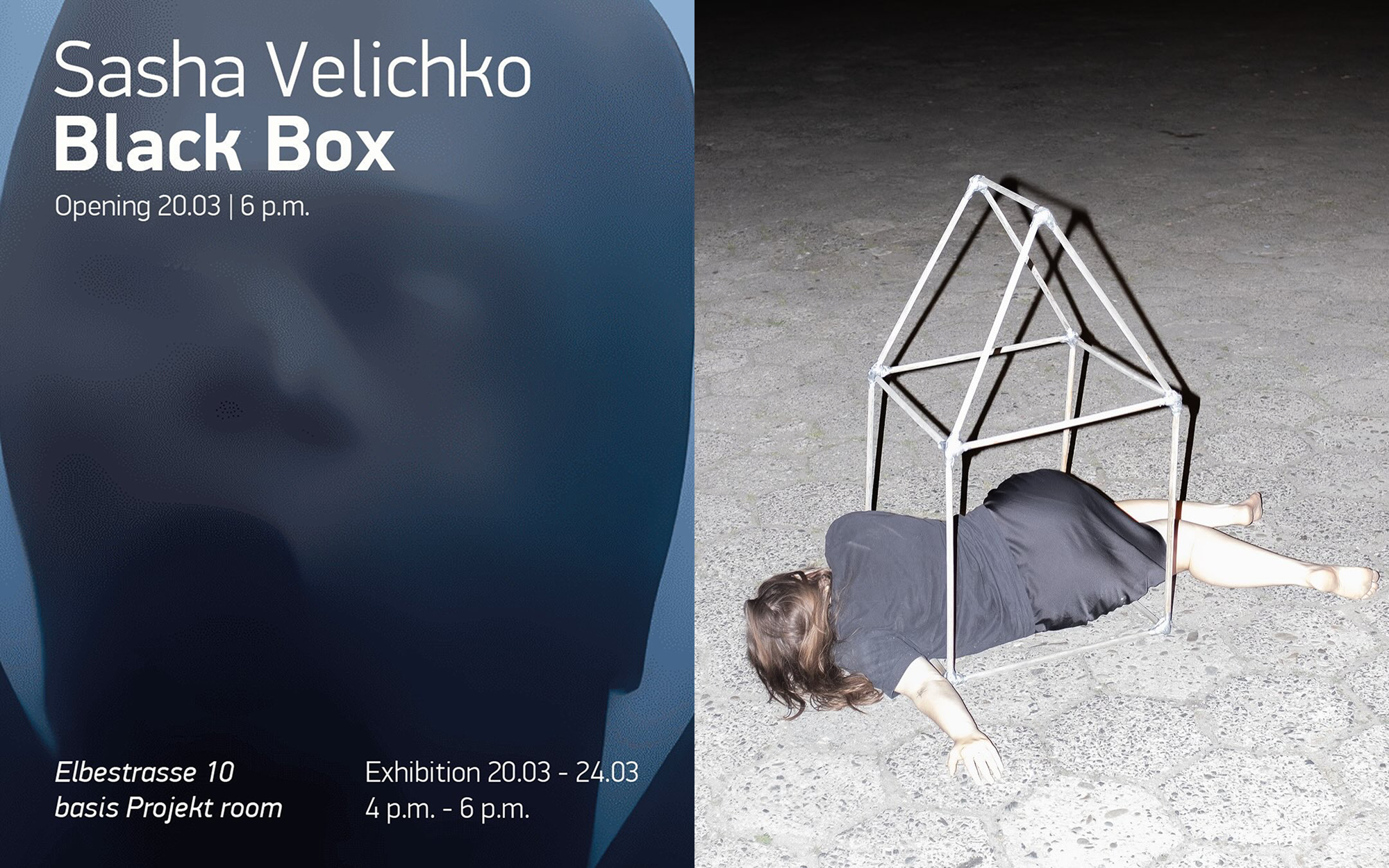
Political, social, personal
New Belarusian painting moves between figurativeness and abstraction, between photography and the expression of drawing. This is a rather long-standing state of clash of opposites, where there is no final certainty, but there is the uncertainty of infantilism. The painting of a person who disappears testifies not only to a personal crisis, loneliness, isolation and a game of hide-and-seek, but is also a projection of the contradictions of the harsh regime and the surrounding chaos of events, where there are neither guarantees nor absolute control. The question for the “treasure hunters” is – are they really looking, or is this a fairly clearly chosen strategy that uses fashionable commercial trends? And is this not a locomotive, of course, much more colourfully talented and free than the queues of nominees presented at the Art-Minsk salon and long ago cast in bronze of post-academic mannerism?
Political and social contexts continue to resonate in Belarusian art, and for the most part, they are understandable abroad. Two large exhibitions opened simultaneously in the capitals of Poland and Germany, which have many contextual similarities. Both touch on the topic of refugees and emigrants, and have an international cast of artists, which significantly emphasizes the Belarusian art scene’s ability to integrate. Interestingly, even the titles have a natural accent, as if immediately warning the viewer about the bestial state of man during repression and war, where the synonyms for Krig are always screams and roars. In the Warsaw exhibition “Where People and Beasts Wander in the Shadow of the Wall”, a curator Volha Kavalskaja tries to look at the situation primarily from the perspective of human rights and a critical attitude to the problem of the migration crisis, which encompasses the entire ecosystem of humans, animals and nature.
The exhibition “Once We Were Trees, Now We Are Birds” at the Berlin ifa gallery and the festival at the Goethe-Institut in exile are organized by the curatorial team of Hanna Karpienka, Emrah Gökdemir and Muhammad Salah and include almost 50 participating artists who have found refuge in Germany. Against the backdrop of the strengthening of authoritarian forces around the world, increasingly characterized by crises, they explore questions of self-identification, belonging, and the search for new forms of existence and resistance.
Of the last three exhibitions with the participation of Vika Mitryčenka, we would like to mention her new project with ceramic Molotov cocktails as part of the exhibition Bearing Witness. The artist sculpts these explosive bottles by hand and covers them with drawings with eloquent inscriptions. Everything leaves a doubly strong feeling of confusion from making sense of the war that has dragged on and its consequences, which are also felt in the Netherlands: “I have not found the motivation, tools or strength to progress… I have been struggling with indecision all day… I stuck to the studio sofa like glue… Browsing lifestyle websites… I started the neurobiologist’s stream video… I didn’t want to go home and flip through…”.
In her new project “Temporality” as part of the True/False Film Fest, Nadzia Sajapina delves into refugees’ altered perception of time, using postcards and advertising banners, telling the story of the bleak contrast between forced migration and tourism, transforming symbols of vacation into reflections on displacement, the uncertainty of fate, and the danger of return.
The humiliation of humanity, dignity, the path to dehumanization is a short step towards accepting the destruction of freedom of speech, action and man. The result is “30 years of dictatorship in 30 posters” – a vague but true anniversary of Artur Vakaraŭ, marked on the eve of the Belarusian “elections” with two exhibitions in Warsaw and Brescia.
History does not teach, but it seems that it doesn’t teach specifically us, in our country, where conclusions have not been drawn from the crises and tragedies of the past, where even today outstanding cultural figures remain prisoners, exiles and wanderers. The representation of Belarusian modernism in famous world museums, where large exhibitions of Marc Chagall and Nadia Léger were held, which remind us of the fate of Belarusian artists of a century ago and of the tragic parallels with the current situation, is all the more important. But they also testify to the dignity, recognition and honour of Belarusian culture.
How does the country itself respond to this? With propaganda exhibitions, for example, the project “Russia-Belarus. Intersection of Destinies”?
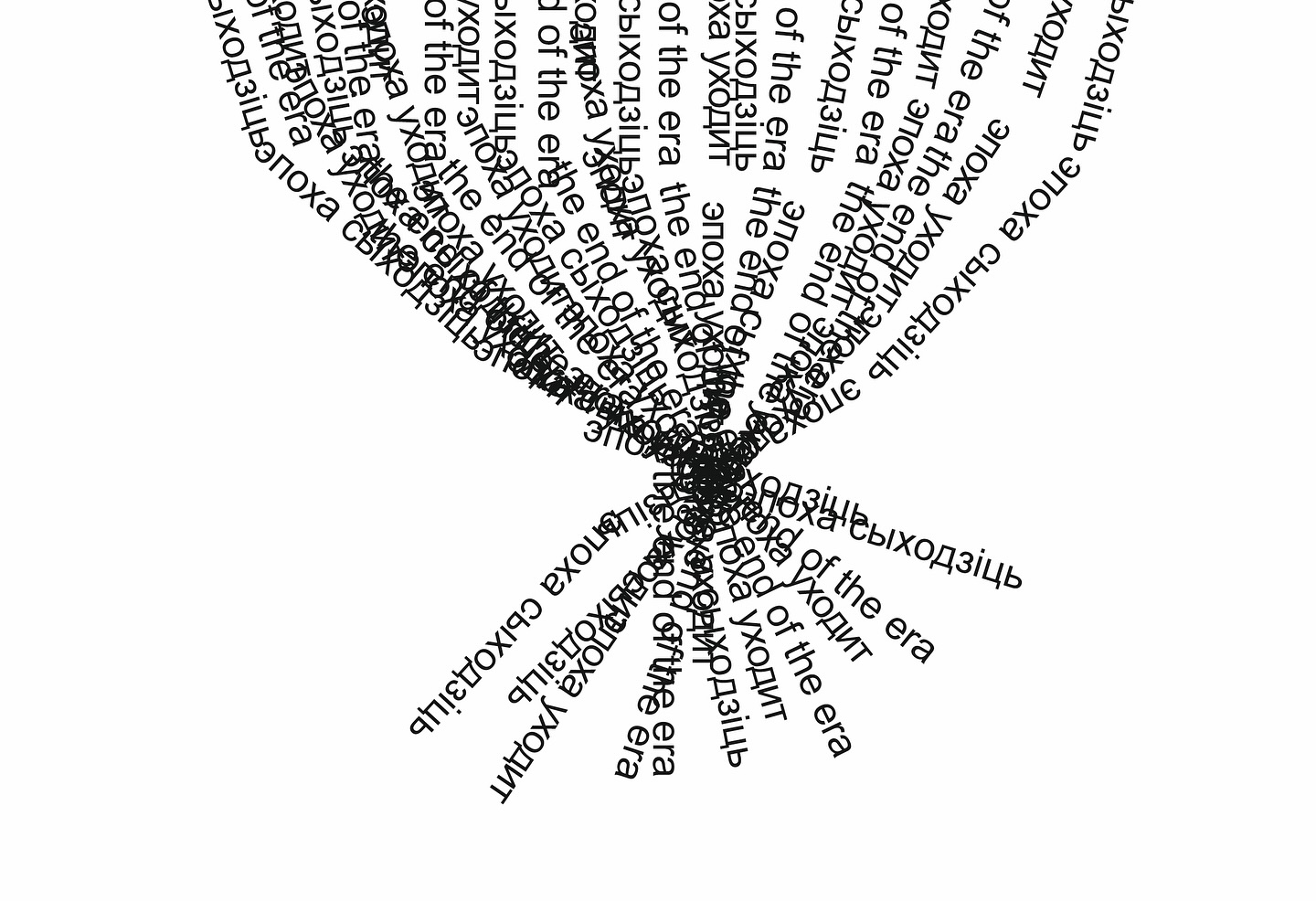
Artists write books
This quarter was notable for the appearance of a number of artists’ books. For example, in January, a book by Raman Aksionaŭ with the expressive title “The End of the Era” was published in Minsk, which unites a cycle of his conceptual drawings.
We still have a “Long way home” ahead of us, which in this case is filled with real artifacts of artistic and ethnographic research into the depths of Paliessie’s Europeanness, and is accompanied by poetic and historical reflections by artists, art historians, and philosophers. The project authors are Maša Maroz, Valery Maroz, Ihar Babkoŭ and Hanna Karpienka.
“Descent into the Marsh” continues the complex movement not only through the swamp of Belarusian protest history in 2020-21, but also draws interesting parallels with the resistance in Hong Kong in 2019-2020.
The Museum of Free Belarus has released its first catalogue, consisting of four sections: “Hope”, dedicated to the events of 2020; “Sacrifice” – about the fate of Belarusian political prisoners; “Solidarity with Ukraine” and “Resistance” – about the struggle that continues to this day.
The Antiwarcoalition.art platform has launched an online journal that explores the complex intertwinings of energy networks and digital platforms during war, the weaponization of landscapes, and the role of art in the production of knowledge that resists the aggregates of militarized infrastructures.
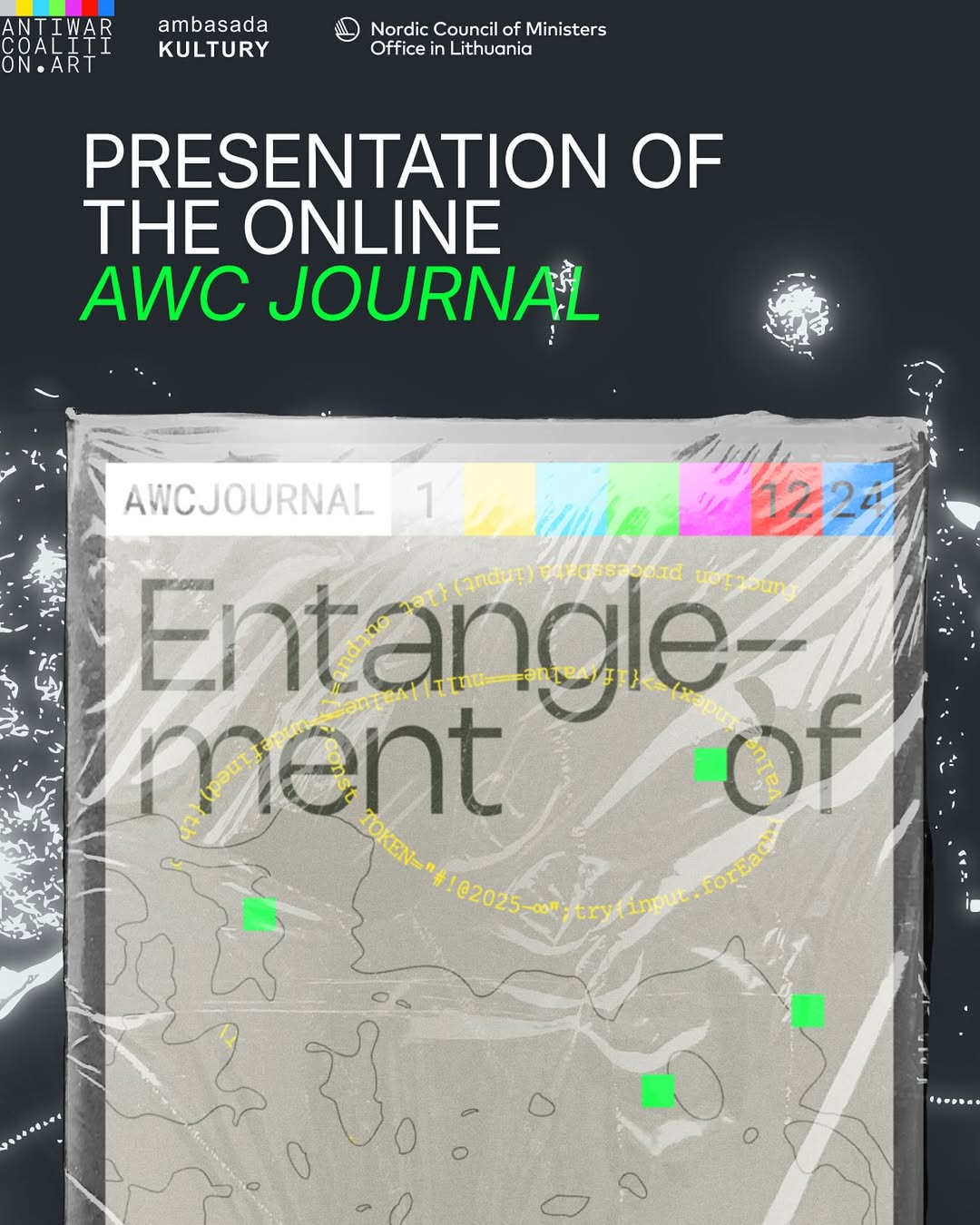
Bold and impudent conceptual texts by Ihar Saŭčanka in the form of hypotheses and scientific foresight, which serve as the author’s proof that the world is arranged exactly like this. The book is called “Proof”.
The Paliessie influence brings us back to a swampy state without a strong foundation, where “there is no difference between the divine and the girlish”. It is this idea that Iryna Džyhiła systematically promotes in the album Oh my girl!


